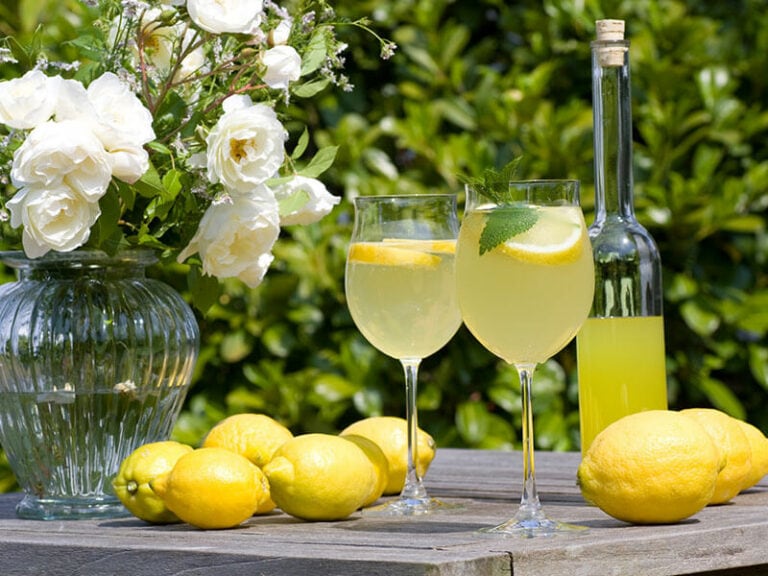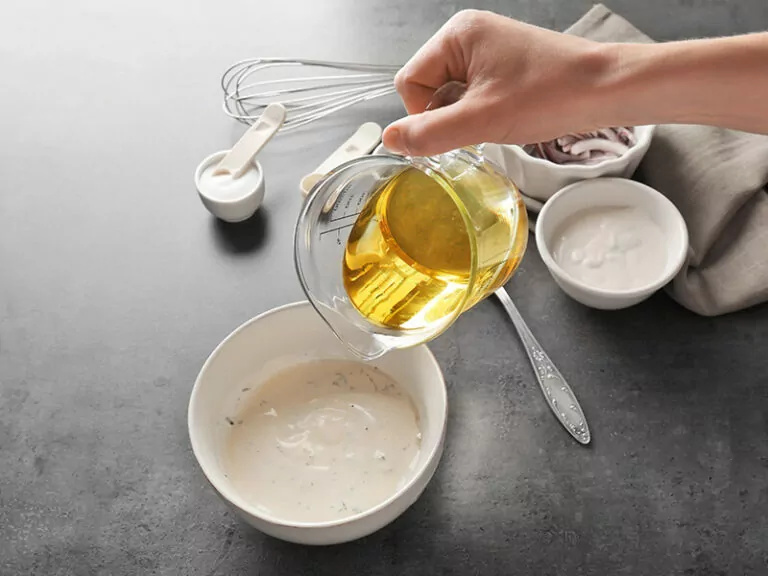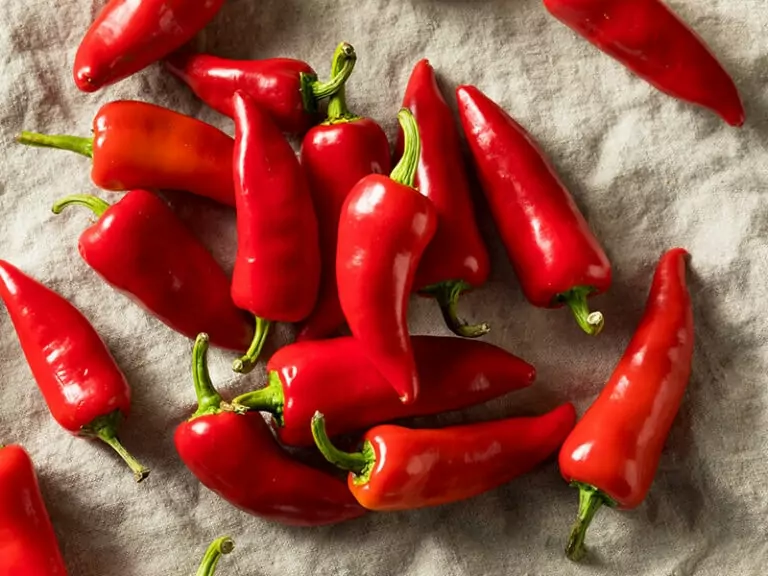As you navigate your culinary exploration, traditional Eastern European dishes might not be the first to pop up on your list. Yet, I encourage you to discover these hidden gastronomic gems. Stick with me, and you’ll come away with newfound culinary inspiration and understanding!
In this post, you’ll learn three vital things: the diverse array of dishes from this region, the intriguing stories behind them, and their most notable characteristics. I believe this knowledge might help solve your perennial “what’s for dinner” dilemma.
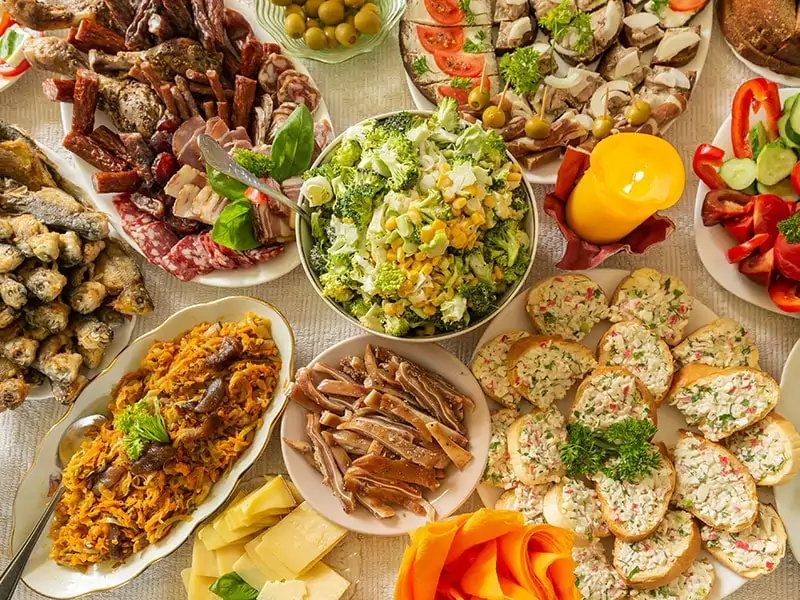
Brief Description Of Eastern European Cuisine
Eastern European cuisine is characterized by hearty and comforting foods, which often feature meat, fish, and common European fruits and vegetables. Dairy products and grains, particularly wheat, barley, and rye, are also common staples in European cuisine.
Here, you can find a variety of breads, pancakes, dumplings, soups, and stews. There’s also a focus on preservation techniques due to harsh winters, including pickling, smoking, salting, and fermenting.
The use of seasonings like paprika, dill, caraway seeds, and garlic is prominent in many Eastern European dishes. The food is often served in generous portions, highlighting the region’s tradition of hospitality.
Importance of Traditional Foods in the Region
Traditional dishes are much more than mere sustenance in Eastern Europe; they’re deeply interwoven with the region’s customs and celebrations. From Christmas feasts to Easter lunches, traditional foods are an integral part of marking important life events and festivals.
Food preparation in this region often involves communal cooking and dining, highlighting the importance of family and community. Traditional Eastern European foods are served at family gatherings and large community events, reinforcing social bonds and unity.
Regional Influences On The Cuisine
- Romanian Cuisine: Romanian delicacy shows strong Ottoman, Central European, and Balkan influences. Vegetables, meat, dairy products, and cereals are the core of its food.
- Bulgarian Cuisine: Stews, soups, pastries, salads, and grilled dishes are extremely popular dishes in Bulgaria. Lamb and pork are favorite kinds of meat, while yogurt is an important ingredient that makes Bulgarian dishes special.
- Russian Cuisine: Due to its vast and diverse landscape, Russia boasts an unrivaled culinary wealth. While its cuisine bears all the characteristics of Eastern Europe, many time-honored dishes from Western Europe and Asia also play an important part in Russian cooking.
- Ukrainian Cuisine: Although Ukrainian cuisine shares many similarities with its Russian neighbor, it also boasts its unique dishes. Bread and wheat products are particularly plentiful and of high quality.
- Other countries and regions that are noteworthy for their unique cuisines include Armenia, Azerbaijan, Belarus, Georgia, Kazakhstan, Moldova, etc.
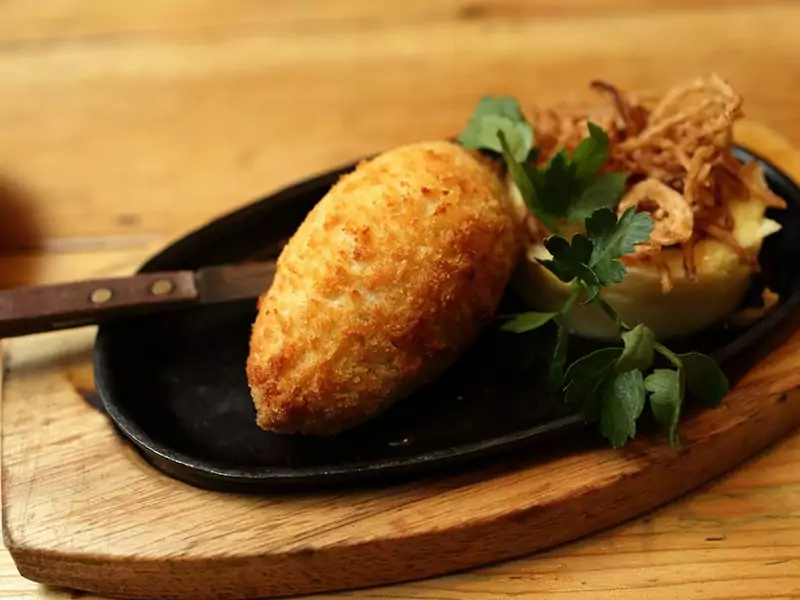
Russia
Solyanka Soup
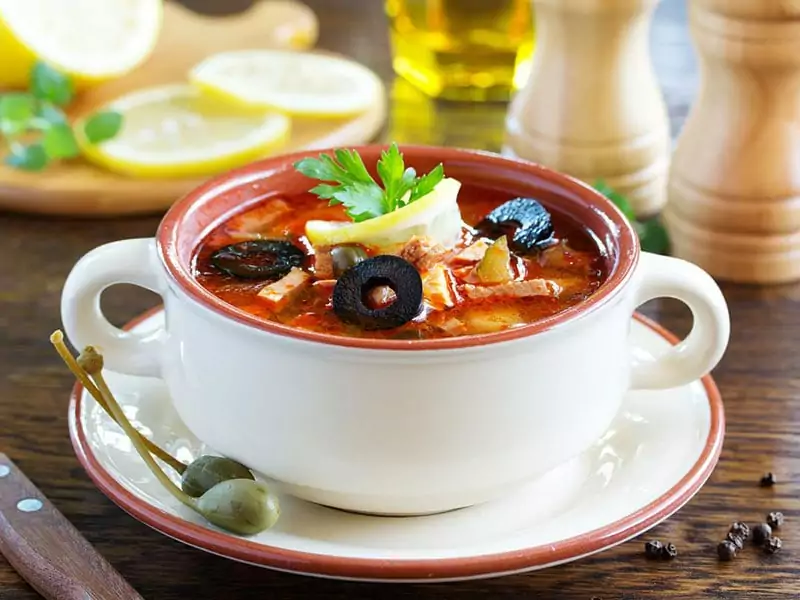
Translated to “Settlers’ Soup” in English, Solyanka is a thick and sour delight hailing from Russia. Its trio of variations – meat, fish, and mushroom – each carries a unique flavor profile. The soup can vary slightly based on regional recipes and personal preferences as well.
Meat Solyanka is a pot full of finely cut beef, ham, sausages, and chicken breast. They join cucumber pickles, tomatoes, onions, olives, capers, allspice, parsley, and dill, all simmered briefly in a rich broth.
Fish Solyanka swaps meat for sturgeon, salmon, and crayfish. This seafood-rich version mirrors the taste of the ocean, offering a robust and unique flavor blend.
Mushroom Solyanka is a vegetarian alternative. Cabbage heated in butter with vinegar, tomatoes, cucumber pickles, and a bit of brine layered with mushrooms. Breadcrumbs and butter join the mix before the soup is briefly baked.
Solyanka Soup is served with a tangy note of lemon, either as wedges or juice, and a dollop of sour cream. Besides being a comfort food, Solyanka’s combination of sour and savory is also a known hangover cure.
Okroshka Soup
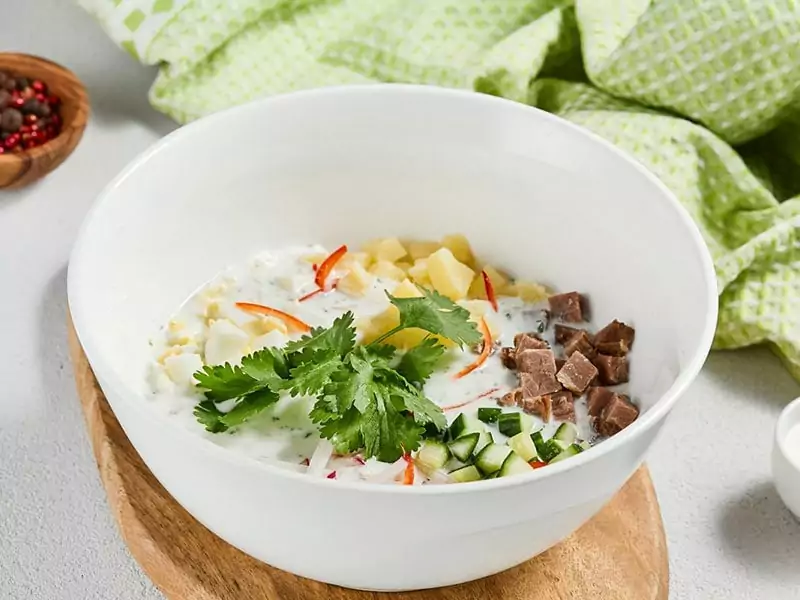
Okroshka, with origins in the Volga region of Russia, is a cold soup that reflects a significant chapter of Russian history, the baptism of Kievan Rus. The name derives from the Russian verb ‘kroshit’, a nod to the finely diced blend of ingredients that compose the soup.
Its character comes from an equal mix of 1:1 raw vegetables, like cucumbers, radishes, spring onions, boiled potatoes, and eggs, with a selection of cooked meats, including ham, beef, veal, or sausages.
A key player in this culinary creation is Kvass, a sweet-sour, low-alcohol Russian beverage, which mingles with the ingredients just before serving, offering a fresh and zesty undertone. Even fruits like cherries and apples can find a home in some variations of Okroshka.
Its refreshing taste and salad-like composition make Okroshka a preferred choice for summer, always served cold, occasionally with ice cubes for an extra chill.
Pirozhki (Hand Pie With Savory Fillings)
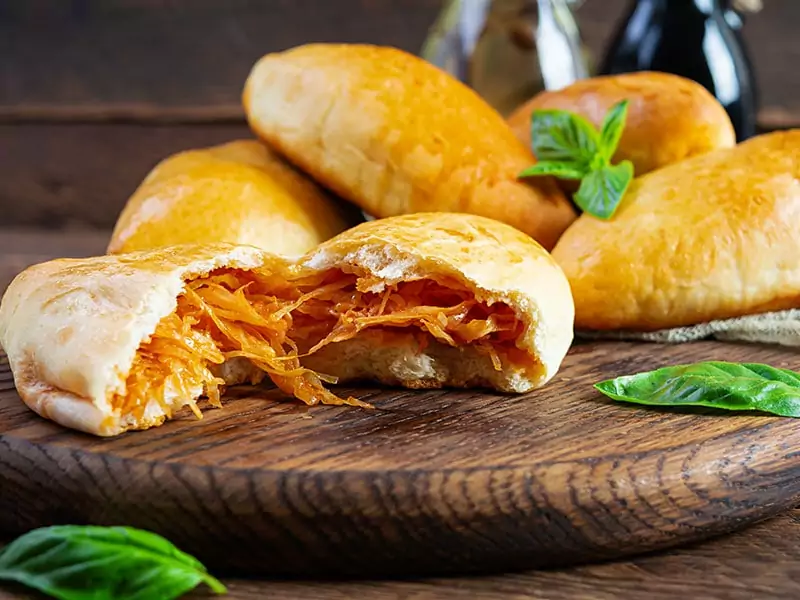
Pirozhki are Russian “little pies,” based on the term ‘pirog’ for full-sized pies. Made from yeast-leavened dough, they’re either baked or fried, forming popular street food in Europe.
When baked, each one is often glazed with egg, resulting in a beautiful golden appearance, and some may even be adorned with decorative strips of dough.
I still reminisce about enjoying a warm Pirozhok on a busy street, biting into the golden, egg-glazed crust to reveal a myriad of fillings. The savory fillings range from ground meat and mashed potatoes, to mushrooms and boiled egg with scallions.
Cabbage-filled ones are also quite popular. Sweet Pirozhki are equally tempting, filled with fruits like apples or cherries, jam, or Tvorog, a well-known type of cheese.
In addition, this treat also has numerous variations around the world. One interesting twist to the classic Pirozhki is the Japanese version, piroshiki. These are breaded with panko before frying and may even have a filling of Japanese curry.
Olivier Salad
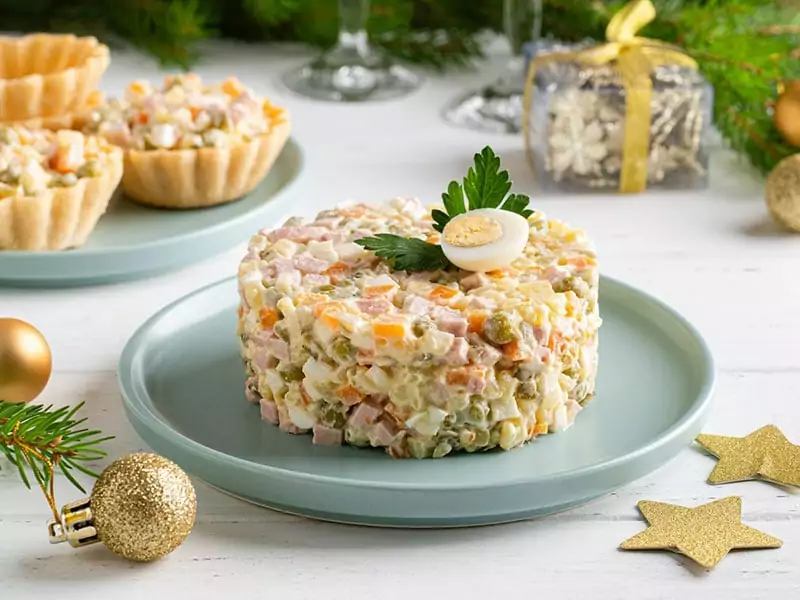
Loved not just in its homeland, Olivier Salad (also widely known as Russian salad) has admirers in other post-Soviet countries and worldwide. It has a medley of diced potatoes, vegetables, eggs, and your choice of chicken or ham, creating a vibrant and nourishing mix.
Additional ingredients might include green peas, celeriac, onions, apples, diced boiled chicken, bologna sausage, or even hot dogs.
The origins of this salad trace back to the 1860s when a Belgian chef, Lucien Olivier, created the first version while working at the Hermitage, one of Moscow’s renowned restaurants. However, the Olivier Salad known and relished today bears more resemblance to Ivanov’s Stolichny Salad.
Ivanov, once an employee at the Hermitage, attempted to recreate Olivier’s original recipe, giving birth to the salad version familiar to the majority of people today.
When New Year’s Eve descends in Russia and other former USSR nations, it’s Olivier Salad that proudly assumes its role as a pivotal appetizer at the grand salad buffet [1].
Blini (Buckwheat Pancake / Russian Crepe)
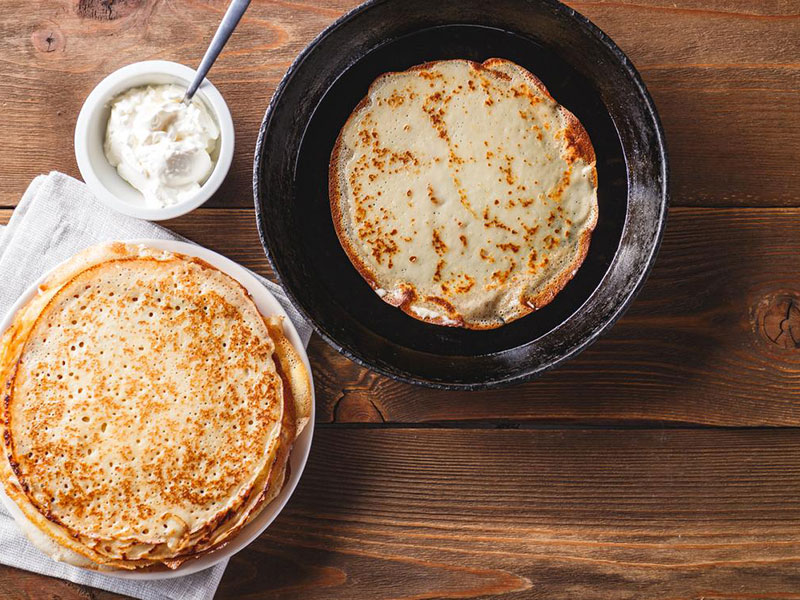
Meet Blini, known by other names such as blin or blinchiki, a remarkable player in the Slavic culinary world. This dish, made with buckwheat or all-purpose flour, yeast, eggs, and milk, results in a soft, spongy texture distinct from baking powder pancakes.
These delicate creations, thinner and smaller than their counterparts, offer a nutty taste, which is not as sweet as pancakes. Blini, with its versatile nature, accommodates both sweet and savory fillings.
Sweet lovers might opt for fruits, jam, honey, or sour cream, while savory fans have choices like Vareniki (potato dumplings), sausage, smoked fish, or even indulgent caviar.
The historical significance of blini in Slavic cultures is intriguing. It’s believed to represent the sun, resonating through its round, golden form [2]. This symbol shines brightly during Maslenitsa, an Eastern Slavic holiday celebrating spring’s arrival.
In this festive celebration, as winter ebbs away, blini steps up as the culinary torchbearer.
Russian Caviar
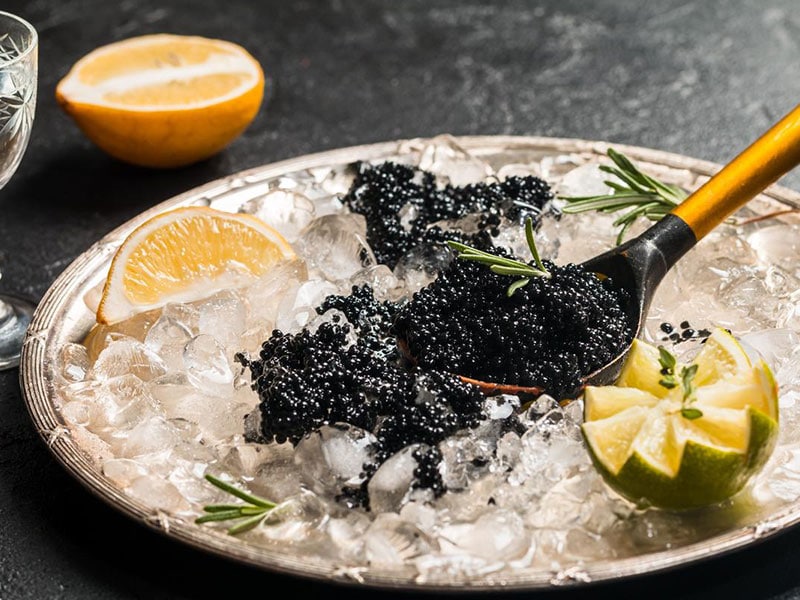
Russian caviar, a prized possession in the culinary world, is the salt-cured roe of the noble sturgeon. It often adorns dark attire, wearing shades of black or brown. However, the truly exquisite caviar may flaunt a silver or amber hue.
Notably, its high-quality refinement commands a steep price tag. While you might hear of ‘caviar’ from other fish species like salmon or paddlefish, they do not carry the real essence of caviar.
The authentic, top-tier caviar hails from countries fringing the Caspian Sea, with Russian caviar being the star, closely rivaling its Iranian counterpart. Dive into the world of Russian caviar, and you’ll discover other caviar varieties like beluga caviar, ossetra caviar, sevruga caviar, and kaluga caviar.
The symphony of flavors these tiny eggs pack is captivating. The palate experiences a mild fishy note followed by a briny, rich, and buttery flavor that is profoundly satisfying.
Remember, good caviar never screams its presence with an intense smell. On the contrary, it whispers its quality with a subtle aroma, urging you to taste its glory. What are suitable accompaniments for caviar? You can pair it with sour cream, blini, toast, or unsalted crackers, and let this indulgent Russian caviar take center stage.
Kholodets (Meat Jelly)
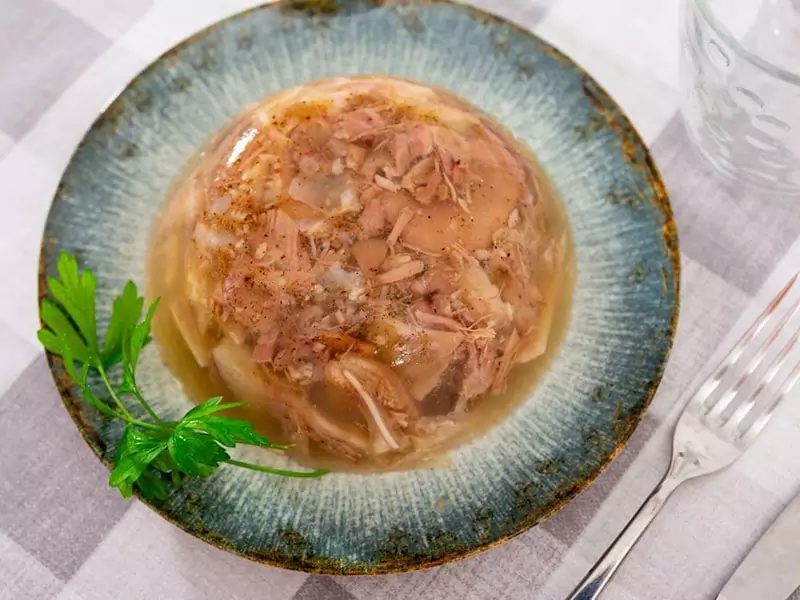
Kholodets, a Russian winter staple, fittingly gets its name from ‘kholod,’ the Russian word for ‘cold.’ It’s a regular feature in Christmas and New Year meals. Originating probably in the 19th century as a food for servants, it’s now a popular Russian recipe.
What’s it made of? Hand-chopped meat and vegetables like carrots, enveloped in a gelatinized, flavorful broth. If the broth is too fat, Kholodets will possibly come with an additional lard layer, which gives more flavor.
Kholodets, usually served as an appetizer in Russian cuisine, pairs well with condiments such as mustard or chrain (a horseradish paste) or even vodka.
Pelmeni (Russian Dumplings)
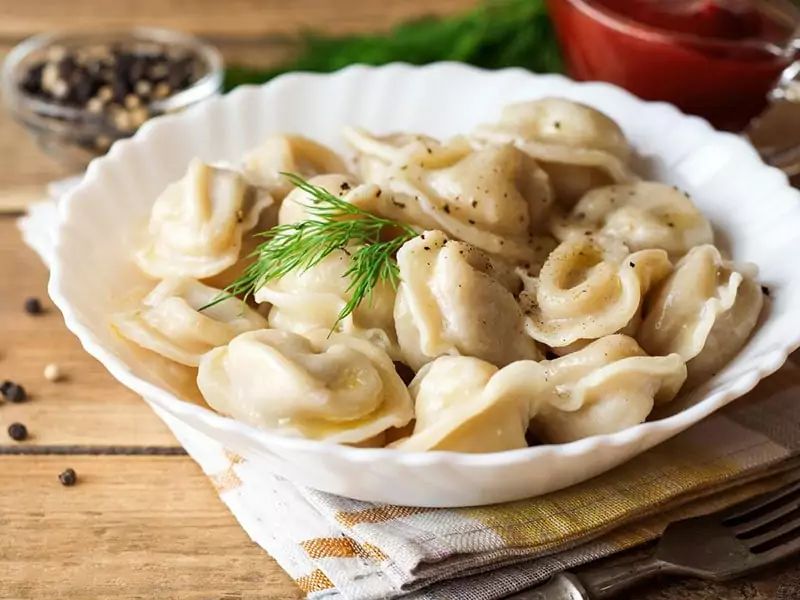
Pelmeni, a beloved Russian recipe, has roots tracing back to the Ural or Siberian regions, likely around the 14th century. Its simple storage requirements and long shelf life made it a favorite among Russian explorers and hunters.
At the core of Pelmeni is a thin dough encapsulating a savory filling, typically meat or vegetables, sometimes beef, lamb, or pork, with onions and black pepper, adding an extra flavor kick.
What’s great about Pelmeni is its convenience – it’s perfect for preparing in large quantities. And when it comes to dining, it’s so versatile. Pelmeni can be accompanied by mashed potatoes, sour cream, mayonnaise, pickled onions, or even Borscht.
Kvass (Fermented Cereal-based Beverage)
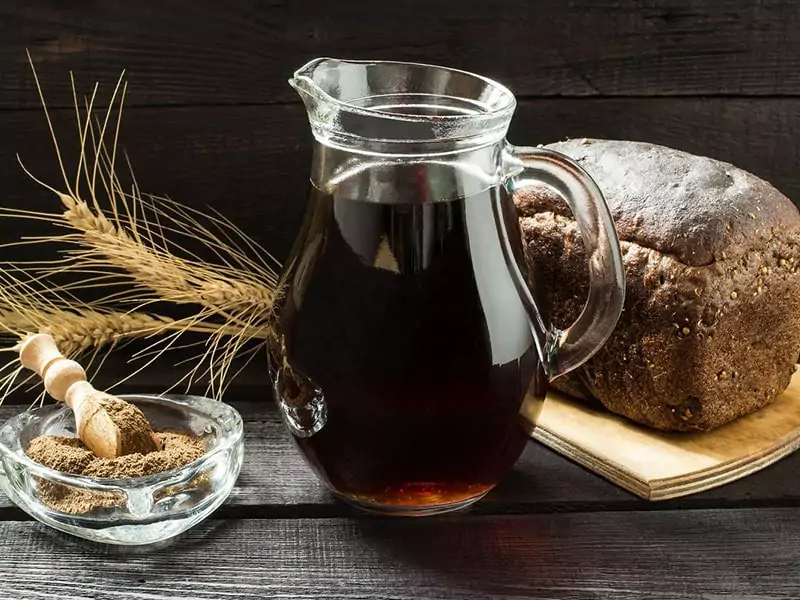
My first encounter with Kvass, a traditional Eastern European beverage, was unforgettable. This famed drink is popular not only in Russia but across many Eastern European nations, and it’s been gaining attention in the US as well.
The intriguing blend of beets, old rye bread, buckwheat meal, or even various berries, herbs, and honey makes Kvass a unique beverage.
Being a fermented cereal-based drink, the Kvass-making process shares similarities with that of kombucha, giving it a distinctively dark, cloudy appearance. But its flavor profile is what sets it apart.
A sip reveals a unique sour taste balanced by a touch of sweetness. Its flavor is complex but satisfying, more savory than kombucha. One aspect of Kvass I appreciate is its low alcohol content, between 0.5% – 2%, meaning it’s often regarded as a non-alcoholic beverage in Russia and many other places.
With no age limit for consumption, it truly is a family-friendly beverage. Plus, it’s a fantastic source of probiotics, which can promote gut health. Summertime is when Kvass truly comes into its own, with its refreshingly tangy flavor making it a popular choice.
Over the years, I’ve discovered creative uses for it beyond the glass. It adds an unexpected twist to fruit juices and even serves as a vinegar substitute in salads.
Shashlik (Skewered And Grilled Meat)
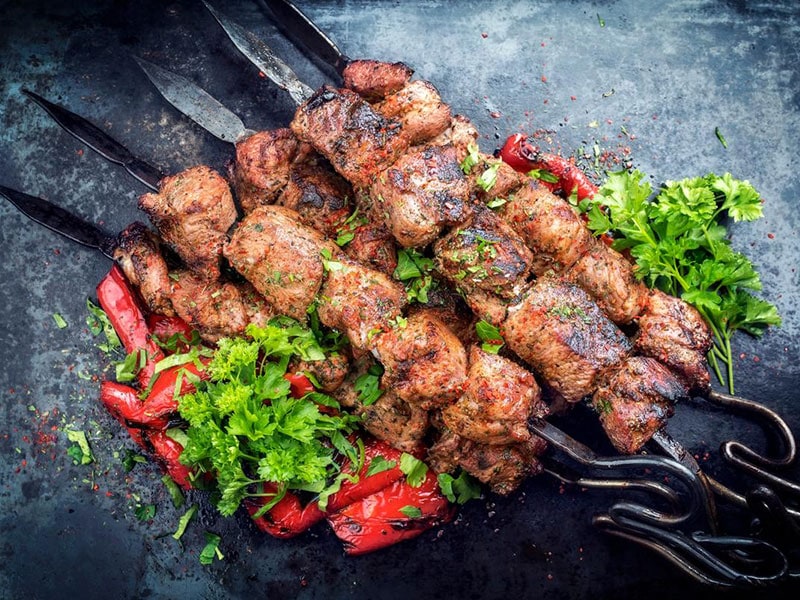
Shashlik, is a culinary creation that rose to popularity during the imperial times in Russia. Hailing from the Caucasus and Central Asia, it’s a wonderful meat-centric dish. Its preparation involves cubed marinated meat – think lamb, pork, or beef – skewered just like shish kebabs.
But it’s not just about the meat; it’s a harmonious blend of vegetables such as onions, bell peppers, and mushrooms too. The heat from hot coals grills the skewers, leading to an enticing aroma and a mouthwatering taste.
It’s quite the hit as a street food, satisfying passerby’s hunger with its juicy, flavorful bites. But it isn’t confined to street stalls. Shashlik stars in BBQ-style parties and picnics, turning the act of grilling the meat or slicing the vegetables into a fun communal affair.
Syrniki (Curd Cheese Pancake)
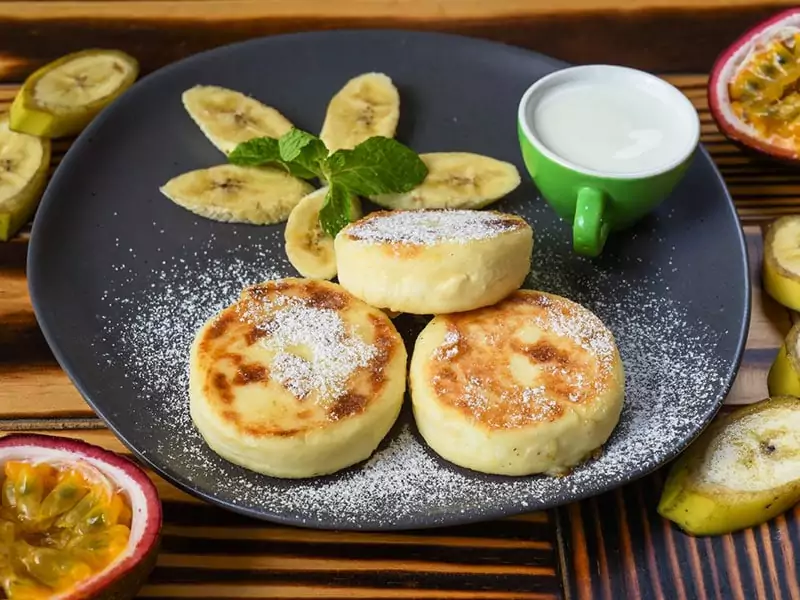
Syrniki, also known as Tvorozhnik or Syrnyky, is a delectable dish originating from Russia. This golden delicacy is essentially a thick curd cheese pancake crafted from tvorog – a type of Russian curd cheese.
Additional ingredients such as eggs, sugar, and flour are blended in, and if you’re a fan of a sweet surprise, raisins can be added as well. Once these pancakes are perfectly cooked, they yield a rich, creamy flavor with a crispy bite that many find irresistible.
Golden on the outside and tender and creamy on the inside, they’re quite the indulgence, especially when served alongside fruit jam, yogurt, sour cream, or fresh berries. While they make for an ideal breakfast, don’t limit yourself – Syrniki can be a satisfying snack at any time of the day.
Kompot (Fruit Beverage)
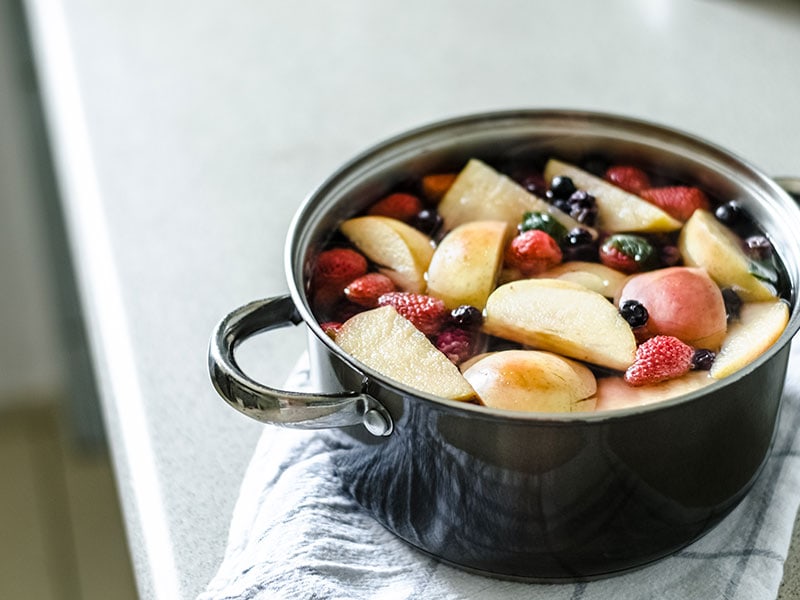
Kompot, not to be confused with compote, is a beloved fruit beverage widespread across Eastern Europe.
This drink’s allure lies in its simplicity: fruits such as sour cherries, strawberries, apples, and peaches are gently simmered in sugar water, occasionally laced with spices like cinnamon.
The result is a sweet, flavor-packed drink that captures the essence of fruits, served hot in winter or cold with ice during summer months.
Zefir (Russian Marshmallow)

Zefir, a delicacy named after the Greek god Zephyr, embodies a light, airy texture similar to marshmallows.
This delicious Russian dessert shares roots with Pastila, a Russian fruit confectionary, but took its modern form in Soviet times. Its evolution was inspired by French chefs in 19th-century Russia, originally integrating whipped egg whites.
The contemporary recipe focuses on fruit purees – think apples or berries – combined with egg whites, sugar, and a gelling agent like agar-agar or pectin. Zefir comes in a range of colors and flaunts a round, shell-like shape.
Each bite delivers the fluffy sensation of a marshmallow, elevated with the vibrant sweetness of fruit puree.
Shuba (Dressed Herring)
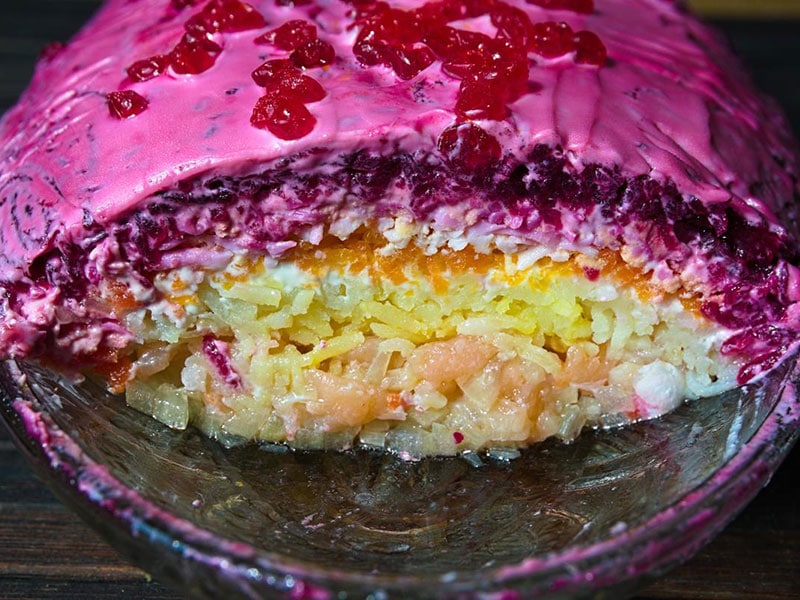
Shuba, also known as “herring under a fur coat” or “fur coat salad,” harks back to the year 1918. At its base, this unique dish harbors diced pickled herrings. These little fishy treasures are then covered with layers of various veggies, including onions, potatoes, and carrots.
But wait, the story doesn’t end here! Next, you’ll see boiled eggs grated to perfection, blanketing the previous layer. Depending on your preference, you might find grated apples lending a sweet touch. Let’s not forget the generous dollop of mayonnaise and the splash of color from beetroots.
Now, this beauty needs some patience. After layering, you want a good six to eight-hour chill in the fridge, letting all the flavors harmoniously blend. Afterward, you’ll be rewarded with a vibrant, multi-hued dish that’s not just pleasing to the eye but also kind to the palate.
Remember, freezing isn’t suitable, but it’ll happily last in the fridge for about a week.
Oladyi / Oladi (Mini Pancake)

Oladyi, also referred to as Oladushki or Oladki, is a Russian dish comprising miniature pancakes.
Although it is considered by some as a variant of Syrniki, Oladyi diverges in one notable aspect: it incorporates yogurt or a non-fermented dairy product, as opposed to cheese curds used in Syrniki.
This distinction results in a pancake that is remarkably fluffy, filling, and palatable despite its small size. The adaptability of Oladyi is also noteworthy. It can be served with a wide range of accompaniments, such as jam, sour cream, honey, and even caviar.
This flexibility extends to its suitability for various meal times – Oladyi is fitting for breakfast, serves as an excellent snack, and can be a pleasant dessert.
Ukha (Fish Soup)
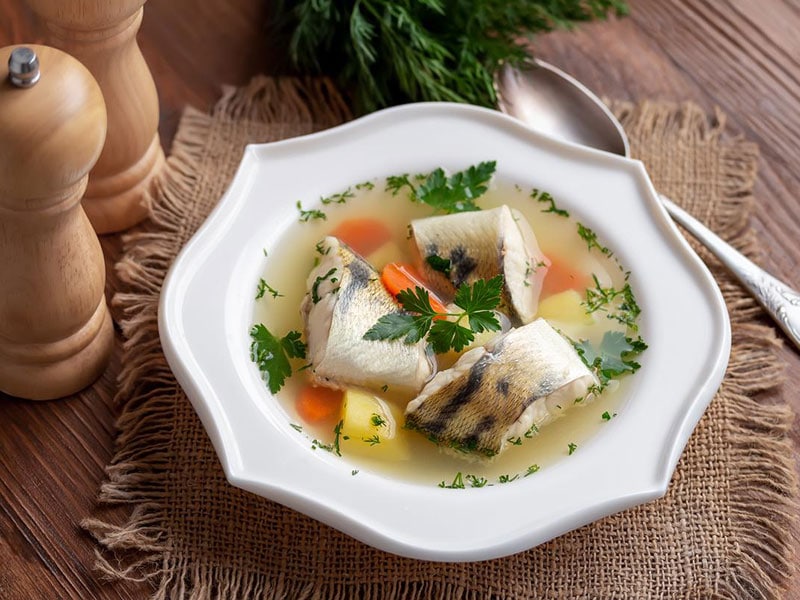
Dating back to the early 17th century, Ukha has strong ties to the Don region. It’s a clear soup, bringing together a mix of fish varieties such as northern pike, bream, or wels catfish. The secret is in the freshness of the fish, which is cooked whole for optimal flavor.
Additionally, it is enhanced with root vegetables and aromatic spices like fennel seed and nutmeg. This might vary by region, though, with some opting to leave out the veggies. For the complete Ukha experience, consider pairing it with bread or a type of Pirog.
Rassolnik (Barley And Pickle Soup)
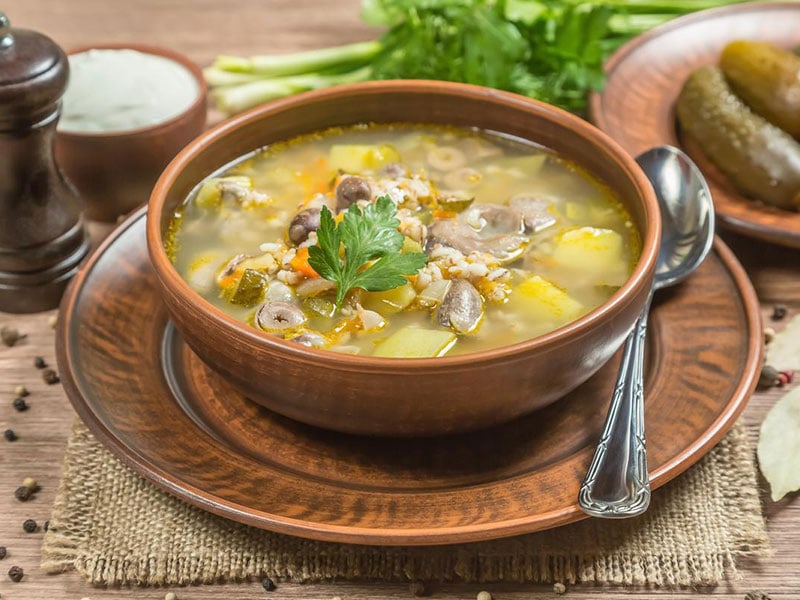
With a history stretching back to the 15th century, Rassolnik is a culinary gem. Originally, it appears fish was a staple ingredient, but today, the recipe spotlights pickled cucumbers and their juice, combined with pearl barley, a mix of herbs, and an assortment of vegetables, including carrots, potatoes, and onions.
There’s also a protein boost, thanks to beef or chicken livers, as well as meat options like beef or chicken or even offals. The dish offers an intoxicating blend of sweet and salty flavors. Beyond its taste, Rassolnik has earned a reputation as a go-to hangover remedy.
Interestingly, it shares some similarities with the Polish cucumber soup, Zupa Ogórkowa.
Vatrushka (Yeast Dough Pastry Filled With Cheese)
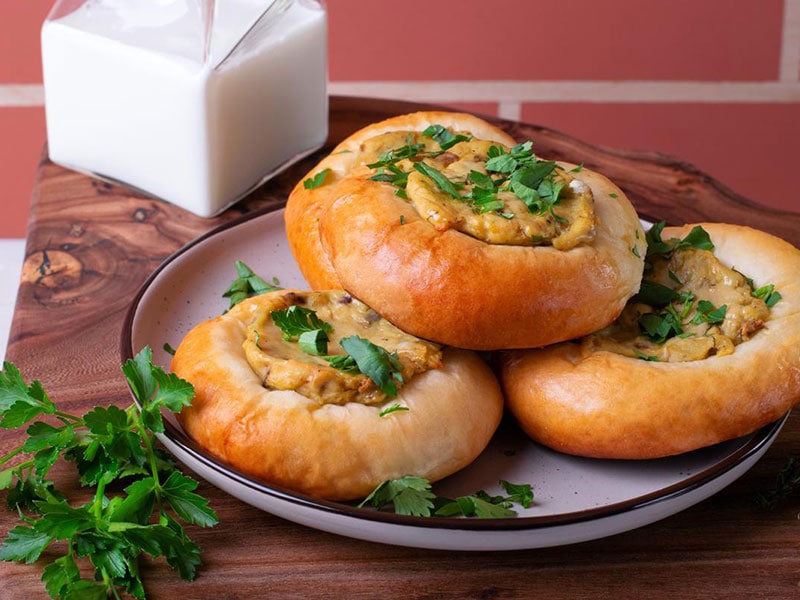
Vatrushka is an exquisite yeast dough pastry fashioned into small round buns. The foundation of this delight is a yeast-based dough that cradles either sweet or savory fillings.
Cheese curds often take center stage in these fillings, but fruit preserves, berries, meat, or vegetables also make their appearance. As if this weren’t tempting enough, more fruits and cheese curds can be strewn across the top.
The end result is a pastry that’s brimming with flavor. The soft, mildly sweet dough forms a perfect partnership with the rich, diverse filling, creating a sensorial delight that’s hard to resist.
Pastila (Fruit Confectionary)
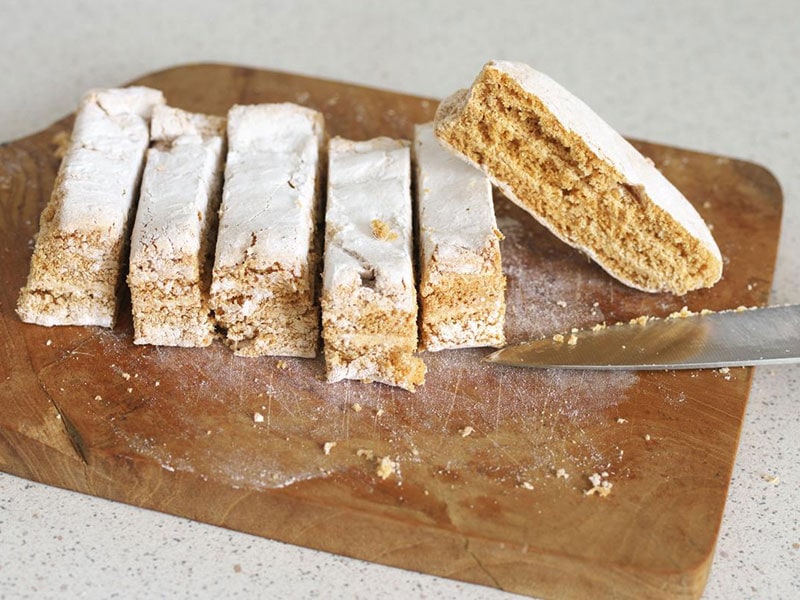
Since its inception in the 16th century, Pastila, a fruit confectionery, has transitioned from a luxury to a treat within everyone’s reach, especially during Soviet times. Its core ingredients are simple yet effective: fruit puree, sugar or honey, and, optionally, egg whites.
The use of sour apples or native Russian berries results in an authentically tangy experience. The kind of fruit chosen dictates Pastila’s color palette, offering options from yellow and pink to red and brown.
An oven-baking process, extending for hours, ensures the mixture achieves a soft, chewy texture akin to marshmallows or meringue. In shape, Pastila resembles a log or brick, but it’s the flavor that truly sets it apart.
Its delicate fruitiness pairs harmoniously with a balanced sweetness and tanginess, making it an excellent companion for tea.
Pozharsky Cutlet
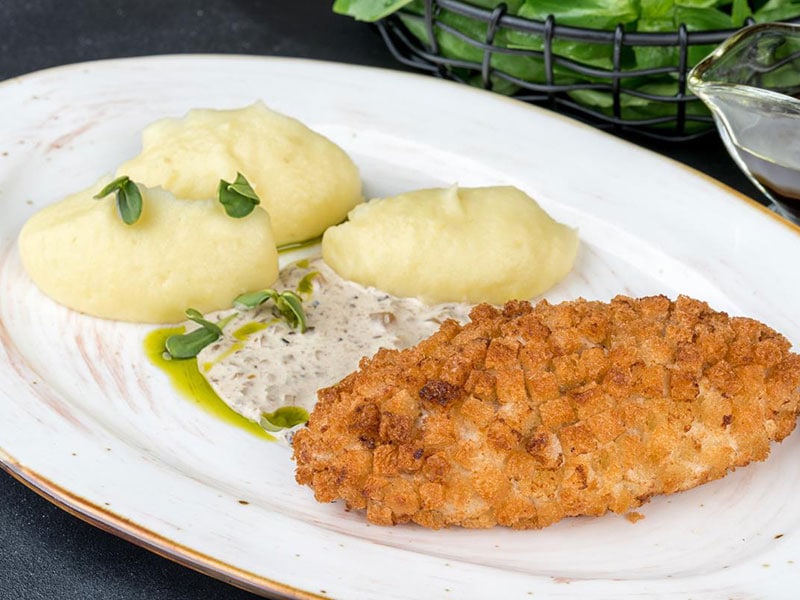
Pozharsky Cutlet is a creation from the 19th century linked to Yevdokim Pozharsky, an owner of an inn and restaurant from the town of Torzhok.
These breaded patties, crafted from ground chicken or veal, offer an enticing contrast of textures, with a juicy interior encapsulated by a super crunchy exterior. Breadcrumbs, white bread, butter, eggs, and milk join forces to create this scrumptious dish.
For an extra layer of flavor, the secret lies in soaking white bread in milk before adding it to the meat. Ideal as a main course, Pozharsky Cutlet harmonizes beautifully with any sauce.
Ptichye Moloko (Bird’s Milk Cake)
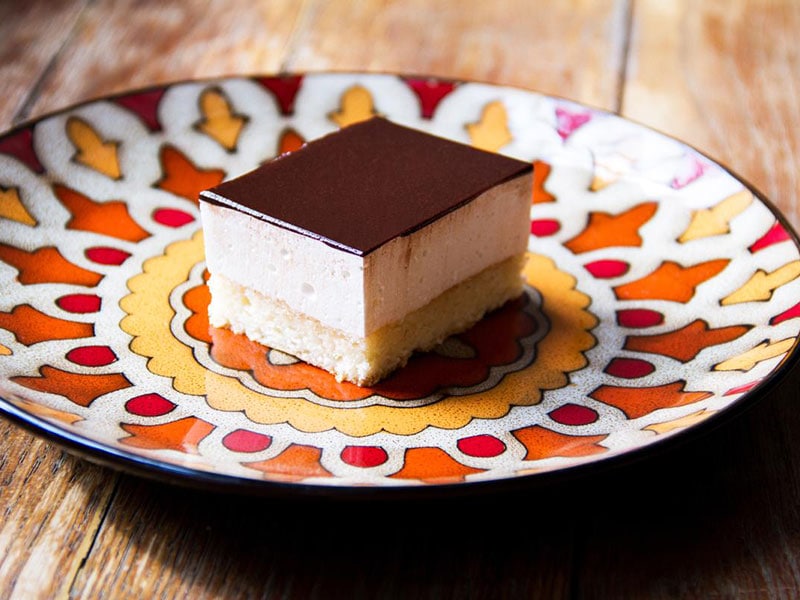
Among the favorite desserts in Europe + (european desserts) is Ptichye Moloko, or Bird’s Milk Cake, a staple sweet treat in Russia and various post-Soviet countries. It was first brought to life in 1978 by the talented Vladimir Guralnik, who served as the pastry chef of Praga, a renowned restaurant in Moscow.
The dessert’s name, interestingly enough, translates to ‘bird’s milk’ in Polish. This exquisite cake consists of several delightful layers: a sponge cake base, a light mousse-like filling, and a topping of chocolate ganache.
Its construction involves ingredients such as gelatin, sour cream, milk, and sugar, culminating in a melt-in-your-mouth soufflé-like dessert with a rich, creamy flavor.
Preparing Ptichye Moloko requires a touch of patience. After assembly, it needs to rest in the refrigerator for a good 2-3 hours to set properly. Once ready, it’s often garnished with a piece of chocolate or berry fruits for added visual appeal.
Shchi (Cabbage Soup)
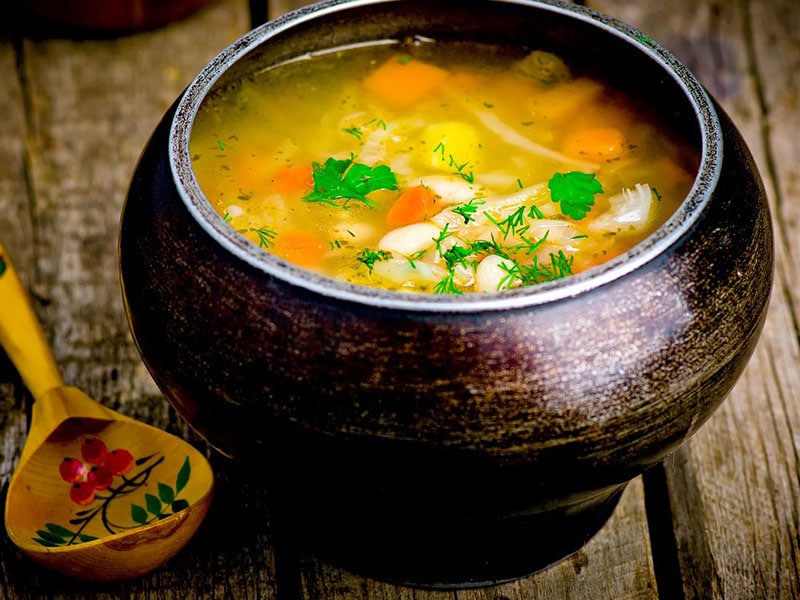
Shchi, a traditional Russian cabbage soup, is a comforting dish that’s both easy to make and budget-friendly. Made with fresh cabbage or sauerkraut, potatoes, and tomatoes, this soup can be tailored to suit various tastes by adding meat or keeping it vegetarian.
Offering a unique blend of tart, savory, and creamy flavors, Shchi is traditionally topped with sour cream and herbs. It’s best enjoyed with a side of bread.
Fun fact: ‘Shchi’ comes from the old Slavic word ‘siitii’, which means ‘satiety’ or “satisfaction,” an apt name for this fulfilling soup.
Vinegret (Beet Salad)
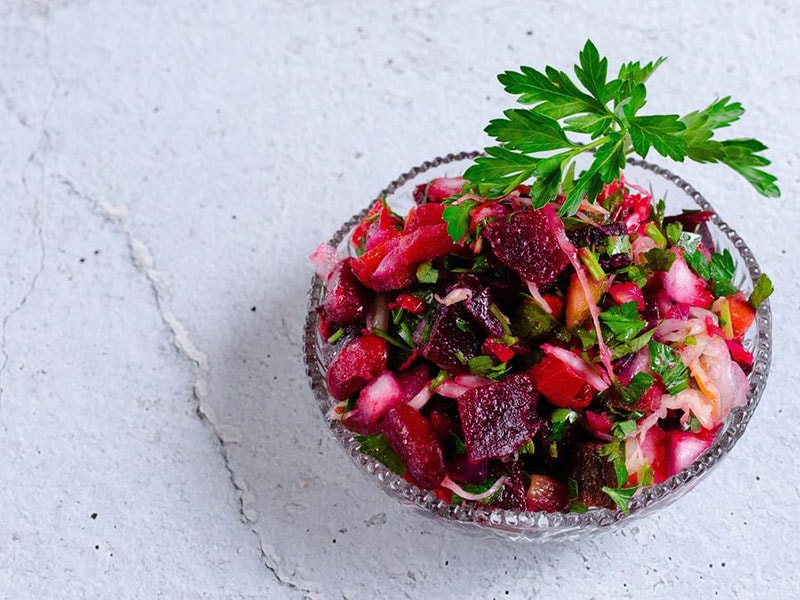
Vinegret, also known as Russian vinaigrette, is a traditional ruby-hued salad widely loved in Russia and Ukraine. It features a vibrant blend of boiled and diced beetroot, potatoes, and carrots, complemented by sauerkraut or brined pickles.
Some variations even include green peas or beans. The salad owes its name to the vinaigrette dressing used, typically made with olive or sunflower oil. It’s often refrigerated before serving, enhancing its freshness.
Vinegret makes an excellent side dish for meat dishes or a refreshing addition to a cold-cut sandwich. Notably healthy and visually appealing, it is a staple during holiday celebrations.
Medovik (Layered Honey Cake)
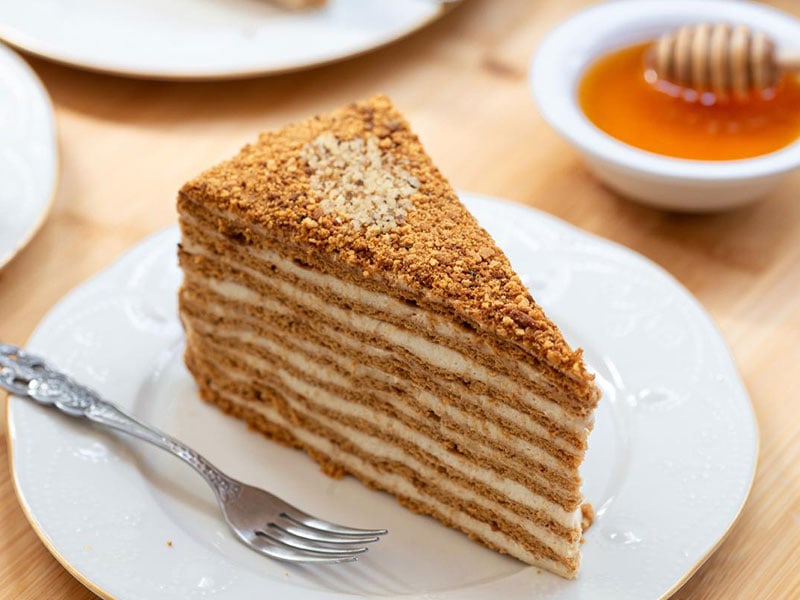
One of the sweet gems from Russia and former Soviet countries, Medovik, has a layered charm that’s impossible to resist. Its Ukrainian sibling, Medivnyk, shares the same allure.
Made from multiple layers of sponge cake, it’s drenched in honey and cozily sandwiched with sour cream or condensed milk. Each bite radiates the beautifully sweet flavor of caramelized honey, making it a darling of desserts since Soviet times.
There’s an amusing legend falsely claiming its inception was an attempt to win over Empress Elizabeth Alexeievna, wife of Russian Tsar Alexander I. Despite her dislike for honey, the story goes that she couldn’t help but adore Medovik.
Beef Stroganoff
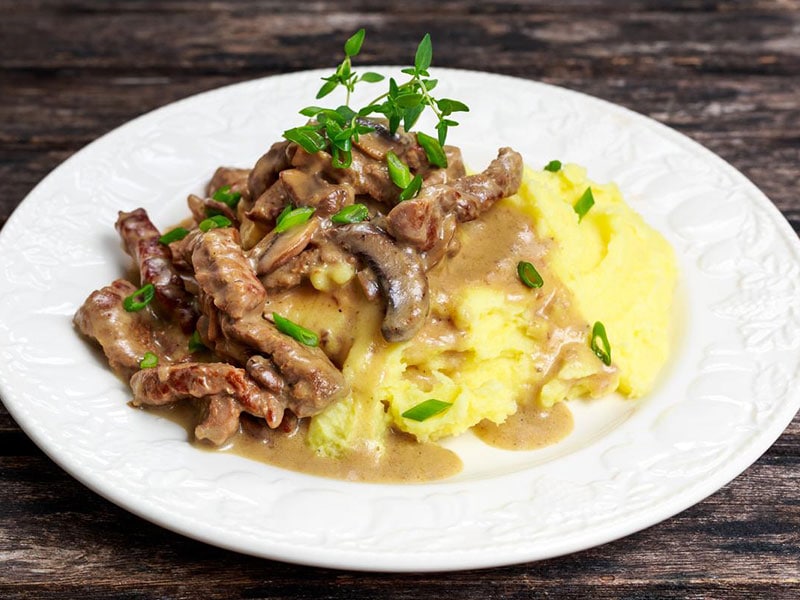
There’s a rich culinary tradition that originates from Russia in the mid-19th century – the dish is none other than Beef Stroganoff, or Beef Stroganov, as it’s sometimes called.
This mouthwatering meal is all about stewed beef drenched in a sauce infused with mustard and smetana, a type of sour cream. I have seen it dressed up with mushrooms and other ingredients, reflecting the regional variations that extend to Central and Eastern Europe.
They are best to enjoy with mashed potatoes or over-fried shoestring potatoes. Now, the beef’s form is quite versatile – you might see it diced, cubed, or cut into strips. For the best results, using quality cuts like beef tenderloin, sirloin steak tips, or boneless ribeye is recommended.
It’s worth noting that traditional goulash uses a cheaper cut of meat suited to slow cooking, while Stroganoff calls for higher quality meat, giving this dish its distinct and luxurious character.
Buckwheat Kasha
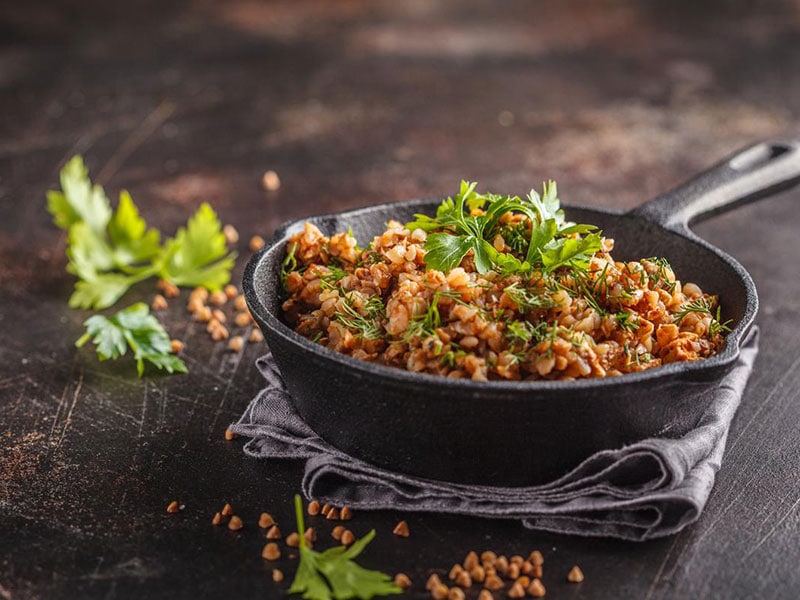
Buckwheat, with its high nutrition and gluten-free properties, truly stands out in the culinary world. Take Kasha (or gretchka), for instance – these are nothing more than roasted buckwheat groats, a process that highlights their signature nutty flavor.
Now, Kasha isn’t picky about when it’s eaten. It happily sits on the breakfast table as groats or porridge or nestles beside meat or fish dishes as an ideal side order. And if you’re in the mood for a stand-alone dish, Kasha cooked with mushrooms never disappoints.
When it comes to preparing Kasha, simplicity is key. A pan with buckwheat, salt, butter, and water simmered on low heat until the buckwheat absorbs all the water is all you need. But before you start, give the buckwheat a good rinse.
It does wonders. And feel free to introduce seasonings like garlic or onion powder for an extra kick of flavor. After the cooking, don’t rush. Let the buckwheat rest before serving for the peak texture!
Sharlotka (Apple Cake)
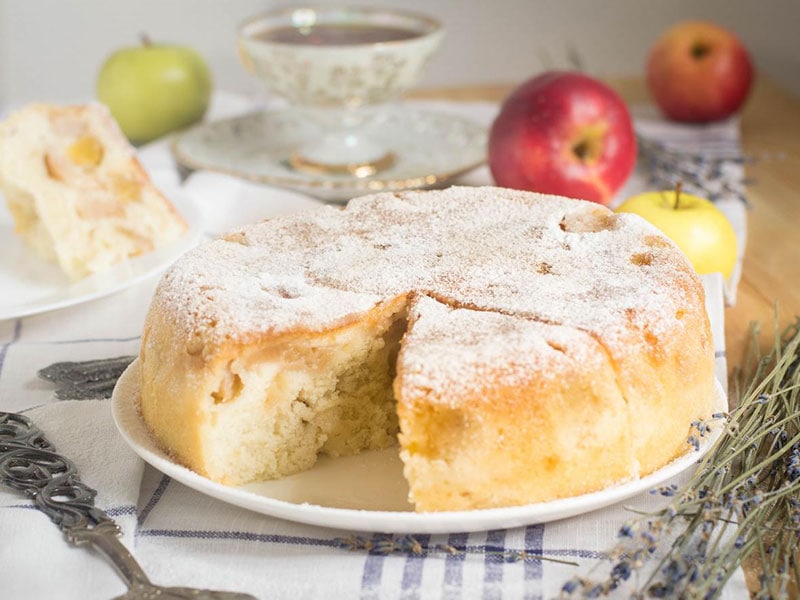
Sharlotka, the Russian iteration of the Charlotte cake, has a rich history tracing back to the 19th century. Allegedly invented to honor Queen Charlotte of Great Britain and Ireland, it was later tweaked by renowned French chef Marie-Antoine Carême when he brought it to Russia.
Instead of a cake filled with fruit puree or custard, he transformed it into a fluffy sponge cake filled with ladyfingers and Bavarian cream, typically incorporating Russian sour apples.
Over time, variations have emerged, incorporating other fruits like pears or berries. Once a regal dessert, Sharlotka has found its way into the heart of everyday Russian cuisine, being a beloved treat prepared by mothers and grandmothers for their children.
Limonnik (Lemon Pie)
Limonnik, a refreshing Russian-style lemon shortcrust pastry, emerged in the 15th century when merchants brought lemons from the East. With summer vibes, it’s crafted using butter, flour, crushed lemon, and sugar.
Its tart-like texture complements the soft and silky lemon filling, providing a not-too-sweet treat with a delightful, delicate sourness. The process of making Limonnik involves creating a buttery dough, filling it with a tangy blend of lemon and sugar, then baking it until golden.
The resultant dish, served ideally with a cup of coffee, offers a refreshing taste and delicate sourness.
Georgia
Mtsvadi (Georgian Barbeque Meat)
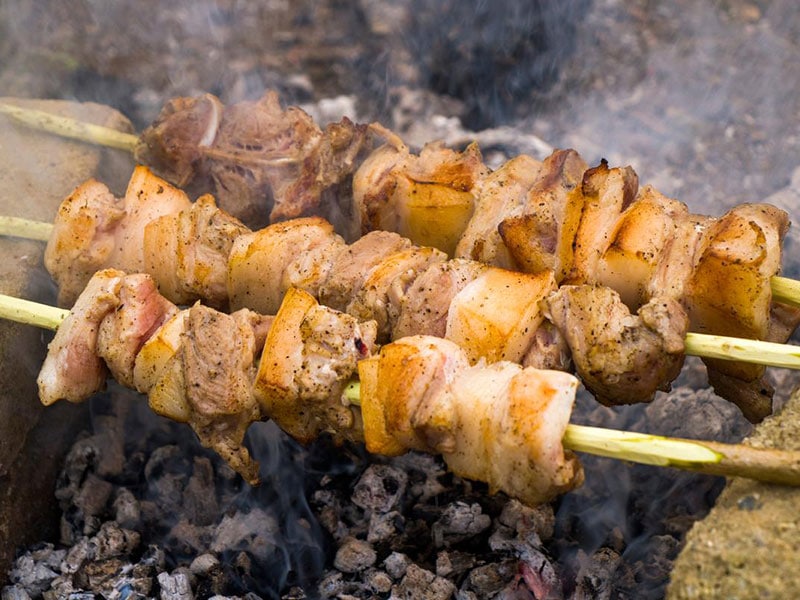
Mtsvadi is a traditional Georgian barbeque dish revered for its tender and juicy skewered shish kebab. Choices for the meat include ground pork, mutton, or veal, which are marinated in a distinctive mixture of pomegranate juice, lemon juice, chopped onions, tarragon, salt, and pepper.
This dish is often prepared outdoors over an open fire, with coal being the preferred method for grilling to achieve its signature smoky flavor. Once ready, Mtsvadi is typically served with tkemali plum sauce, raw onion rings, sliced tomatoes, and a garnish of pomegranate seeds.
Ajika (Spicy Georgian Paste)
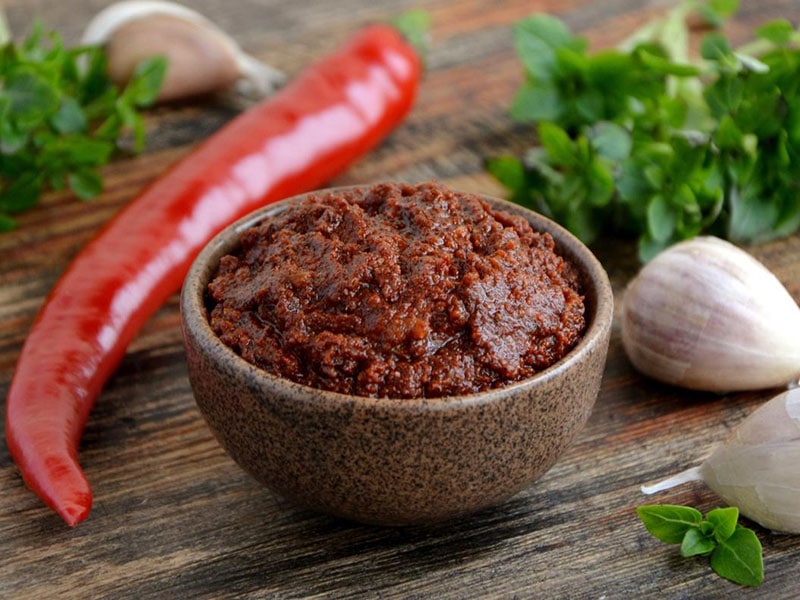
Ajika, a fiery hot Georgian paste, is a culinary staple celebrated for its bold flavors. It’s crafted with a mix of hot peppers, garlic, walnuts, and an aromatic blend of fresh herbs and spices such as coriander, basil, dill, and marigold petals.
The vibrant paste is commonly employed as a flavor enhancer for meat and fish dishes, though it also shines as a spicy yet nuanced dip. Depending on the ripeness of the peppers used, Ajika can either present a deep red or lively green hue.
In terms of consistency, some variants bear a resemblance to Italian red pesto. Ajika is not only a crucial component in Georgian cuisine + (Georgian foods), but it’s also a significant cultural symbol, earning a spot on the Intangible Cultural Heritage of Georgia list in 2018 [3].
Kharcho (Meat Soup)
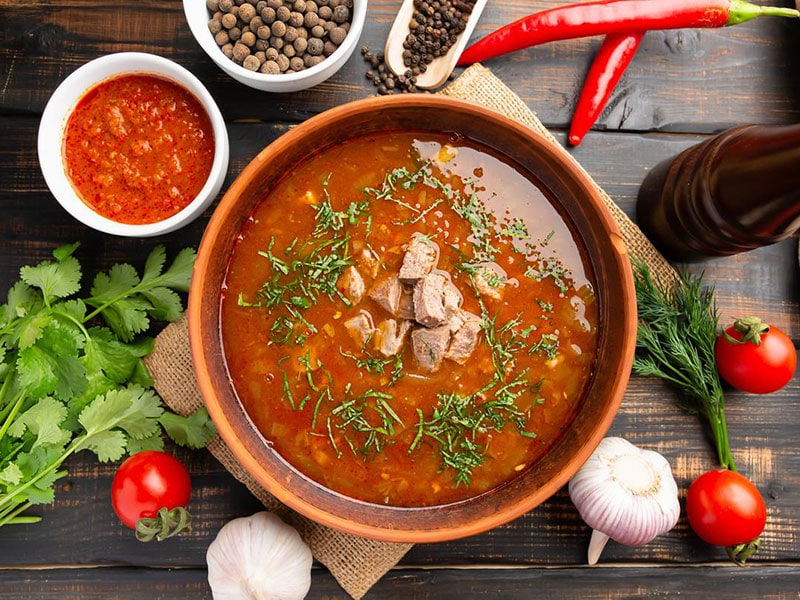
Kharcho, sometimes spelled Harcho, is a flavorful traditional Georgian soup. Its composition includes meat – be it beef, lamb, pork, chicken, or even goose, complemented by rice, cherry plum purée, chopped walnuts, and an enticing medley of spices.
The plum purée, derived from tklapi or tkemali, is one of its distinguishing ingredients. The vibrant flavors are further intensified by the Georgian spice blend, khmeli suneli, that combines dried blue fenugreek, fennel, parsley, marigold petals, basil, coriander, red pepper, and bay leaves.
The spice mix varies from one Georgian region to another, with some favoring allspice, bay leaf, and peppercorns. The soup is often garnished with finely chopped fresh coriander, adding another layer of complexity to its taste profile. To appreciate its richness fully, Kharcho is best savored hot.
Khachapuri (Cheese Bread)

Khachapuri, Georgia’s national dish, is a warm, cheese-filled bread that’s celebrated as a symbol of the country’s rich culinary heritage.
On the 27th of February, you can partake in the joy of National Khachapuri Day, a testament to its immense popularity not just in restaurants but also as a crave-worthy street food.
This beloved staple commences with leavened bread dough, which is meticulously shaped and endowed with a satisfyingly gooey center of cheese, eggs, and other select ingredients. Khachapuri cheese, either fresh or aged, is a predominant choice for that luscious filling.
A customary practice is tearing off the bread’s crust and savoring it by dipping into the creamy cheese center.
Khachapuri is wonderfully diverse, showcasing variations that represent Georgia’s different regions. The Imeretian (Imeruli) khachapuri, for instance, is a well-loved variant featuring a circular yeast dough filled with white Imeretian salted cheese.
Another rendition hailing from Adjara, a picturesque Georgian region by the Black Sea, is the Adjarian khachapuri, notable for its Sulguni or Imeretian cheese filling, or sometimes a combination of both.
And then there’s the Megrelian khachapuri (Megruli), similar to its Imeretian cousin but distinguishes itself with an additional layer of cheese on top.
Chicken Tabaka
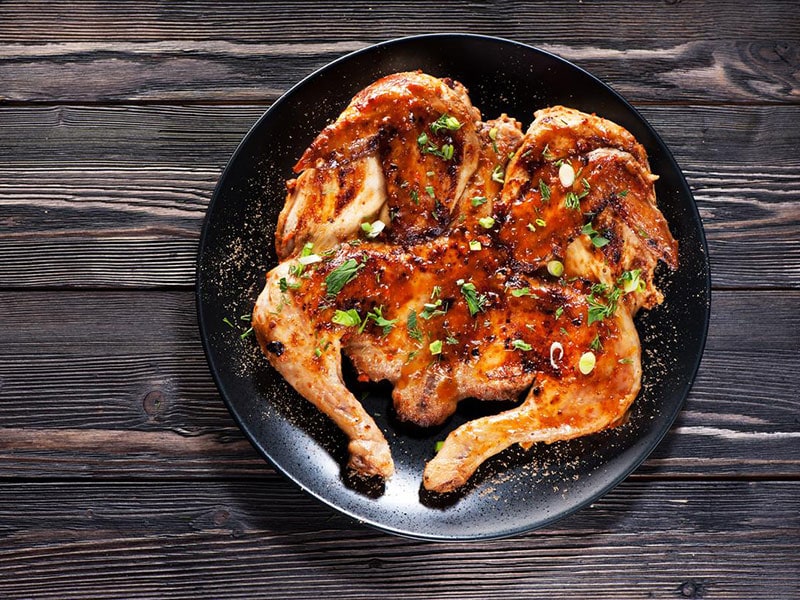
Chicken tabaka, or tapaka, is a pan-fried dish that has found a home in kitchens throughout Eastern Europe and Central Asia. Originating from Georgian and other Caucasian cuisines, it was a staple in Soviet-era restaurants.
This dish relies on a special pan known as a tapa, where the chicken is spread out, and a weight is applied to ensure even, thorough cooking. Modern twists on the recipe might involve using special pan sets with a heavy cover or even a screw press for that weighty role.
The chicken’s exterior crisps up beautifully while the inside retains its moist tenderness. As a final touch, the locals will season the dish with garlic or dress it with traditional Georgian sauces such as bazhe, satsivi, or tkemali.
Lobiani (Bean Bread)
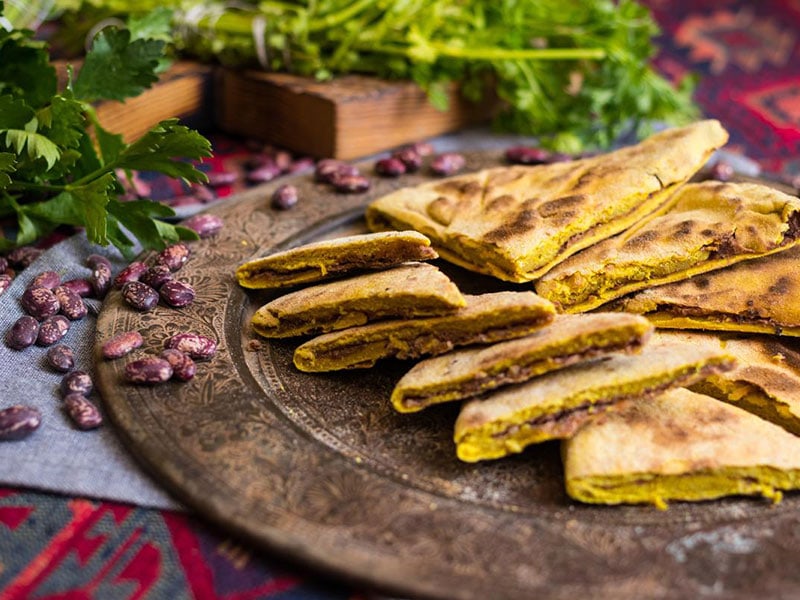
Lobiani, a Georgian bean-filled bread, has long been a staple at Barbaroba, the feast of St. Barbara. Now, two versions of this tasty bread exist, one with ham and a plain, vegetarian one.
The essence of Lobiani is the beans – or “lobio” in Georgian, from which the bread gets its name. These kidney beans, pre-boiled and ready, mingle beautifully with the flavors of onions, parsley, coriander, and black pepper, creating a filling that’s hard to resist.
Then, there’s the dough, prepared with matsoni, adding a distinct touch to the overall taste. And if you’re in Georgia, you might spot the Rachuli Lobiani – it looks a bit like the famed Khachapuri, but the cheese is traded for beans.
Lobio (Bean Stew)
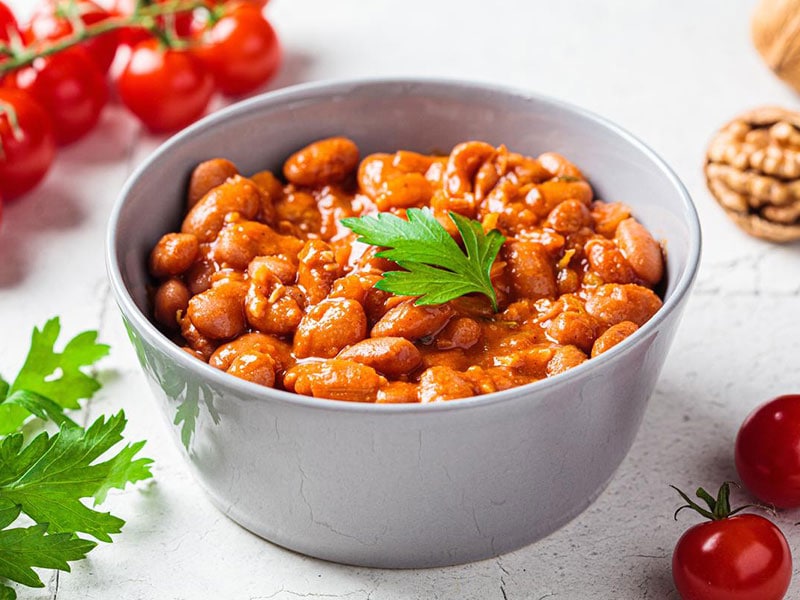
Lobio, a traditional Georgian dish, celebrates the humble bean, usually red kidney beans, which are either cooked or stewed with an assortment of spices. Complementary flavors such as coriander, walnuts, garlic, and onion are brought together to enhance the taste.
In true Georgian fashion, Lobio is often paired with Mchadi, a traditional cornbread, and marinated vegetables for a complete meal. The variant that stands out is lobio nigozit, boasting mashed red kidney beans swimming in a thick, irresistible walnut sauce.
Some prefer their Lobio hot, in which case, white beans step into the spotlight. Certain hot versions may even include meat, expanding the dish’s texture and taste profile. But Lobio isn’t limited to a main course. It can also take on the role of a salad or can be served hot or cold
Ukraine
Chicken Kyiv
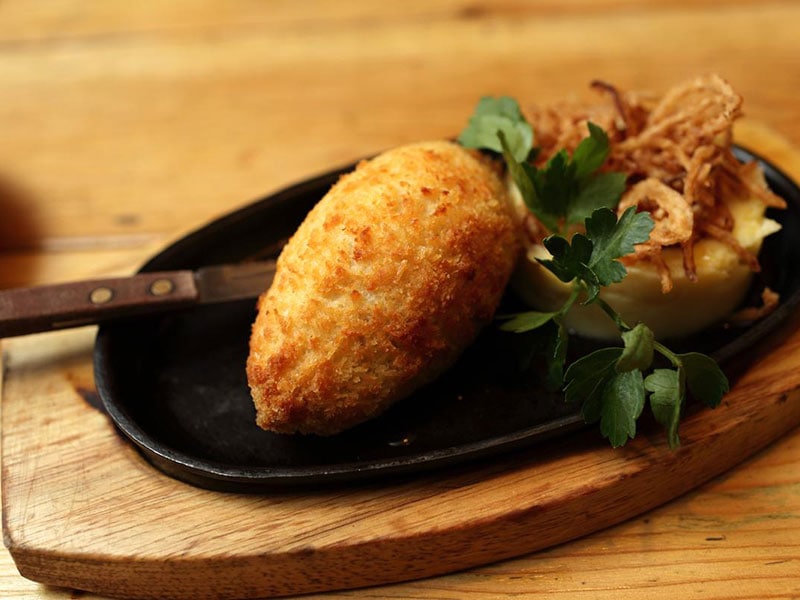
In my culinary exploration, I came across Chicken Kyiv, a dish with Eastern European roots, namely Ukrainian and Russian. It’s named after Ukraine’s capital city, Kyiv. This dish features a chicken fillet that’s been pounded and then expertly rolled around a pat of cold butter.
A coating of egg and breadcrumbs ensures a perfect finish before it’s either baked or fried. To enhance its taste, some people opt for herb butter. Using a boned and skinned chicken breast cut lengthwise made the process easier.
The resulting dish has a captivatingly crunchy exterior, contrasting a tender, juicy interior. Despite its gourmet reputation among many Slavic people, making Chicken Kyiv at home isn’t as challenging as it might seem. One tip I found invaluable was wrapping the meat in wax paper before pounding it.
Pampushka / Pampushki (Garlic Buns)
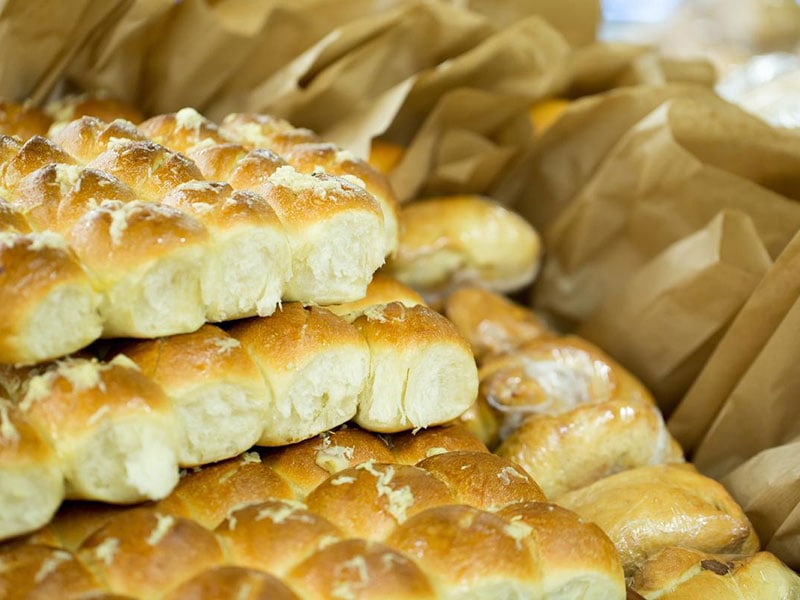
Pampushka, also known as Pampushki, is a Ukrainian traditional dish that takes the form of small yeasted buns. The name Pampukh traces back to the Polish word pampuch, referring to a thick dumpling or steamed doughnut.
They’re crafted from yeast dough, which can be made from wheat, rye, or buckwheat flour. Once they’re perfectly formed, they’re either baked or fried until they reach a beautiful golden hue.
There’s something for everyone when it comes to Pampushki, as they can be sweet or savory. The savory version, usually served alongside red Borscht soup and slices of salo, doesn’t have any filling.
Sweet Pampushki, on the other hand, has a heart of fruits, povydlo (a type of food spread), berries, or poppy seeds, all under a dusting of powdered sugar.
Borscht (Sour Soup)
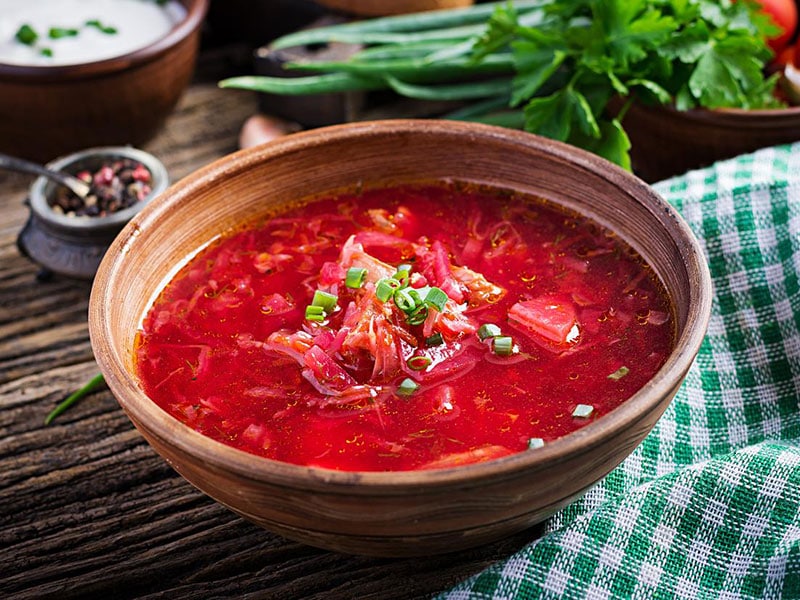
Borscht, also known as barszcz, is a sour soup cherished across Eastern Europe and Northern Asia. It’s the pride of several nations, with many, including Ukraine, Russia, Lithuania, Belarus, and Poland, declaring it their national dish.
Most cultural historians, however, trace its roots back to Ukraine. When I had my first spoonful of Borscht, I was struck by the vibrant red hue, a characteristic color from one of its main ingredients, red beetroots.
The blend of meat or bone stock with sautéed vegetables makes up the soul of this soup. Cabbage, carrots, onions, potatoes, and tomatoes often find their place in the mix, creating a hearty and comforting broth.
Some variations include meat or fish, while others keep it purely vegetarian. But it’s the blend of herbs, spices, and condiments that truly accentuates Borscht’s flavor. Think salt, black pepper, garlic, bay leaves, and dill dancing together on your taste buds.
Depending on the weather or personal preference, Borscht can be served either hot or cold. The rich cultural significance of Borscht led UNESCO to place it on the List of Intangible Cultural Heritage in Need of Urgent Safeguarding in 2022 [4].
A remarkable recognition for a humble soup! It’s important to note, however, that the name Borscht isn’t exclusive to the beetroot variant. There’s also green borscht, based on sorrel, rye-based white borscht, and a cabbage version.
Bublik (Traditional Sweet Bread)

Bublik, a familiar name in Eastern Europe, especially in Ukraine and Russia, is a beloved snack. Known as Baranka in Belarus, this treat’s creation is credited to the Jewish population in czarist Russia.
Its form may remind you of a bagel, but Bublik’s distinctive trait is its larger size and more pronounced hole. Preparation involves brief poaching in water before the bun is adorned with poppy seeds, sesame, or sugar and baked.
It’s traditional to find these buns on street carts, hanging on a string for eager customers. Although Bublik is not a breakfast item, it is still a favorite with coffee or tea, offering a denser, chewier, and slightly drier texture than your average bagel.
For the best flavor, break them into fragments and dip them into jam, sour cream, or similar delights.
Paska (Easter Bread)

I remember the first time I had Paska, also known as kulich in Russia or Velýkden’ in Ukraine. It’s a sweet, fragrant Easter bread that shares a name with the Jewish holiday of Pesach. Paska’s special feature is its tall cylindrical shape with a rounded top.
While preparing, the dough is enriched with citrus juice or zest, vanilla, rum, and ginger. On occasion, saffron might even make an appearance. The texture of the bread can surprise you with added delights like raisins, candied fruit, or maraschino cherries.
The ornamental aspect of Paska is another interesting feature – previously decorated with roses or crosses, today, it’s adorned with a pristine egg-white glaze, colorful sprinkles, or poppy seeds.
In Ukraine, a common tradition during Easter Eve is to fill Easter baskets with ceremonial foods such as Easter eggs, Paska, kovbasa (sausage), butter, and salt.
When I was there, I enjoyed Paska with hrudka, a bland, sweet custard that is similar to cheese, made from separated eggs and milk. This combination, along with beets mixed with horseradish (chren/hrin) and kovbasa (sausage), created an unforgettable taste experience.
Kutia (Sweet Wheat Berry Dish)
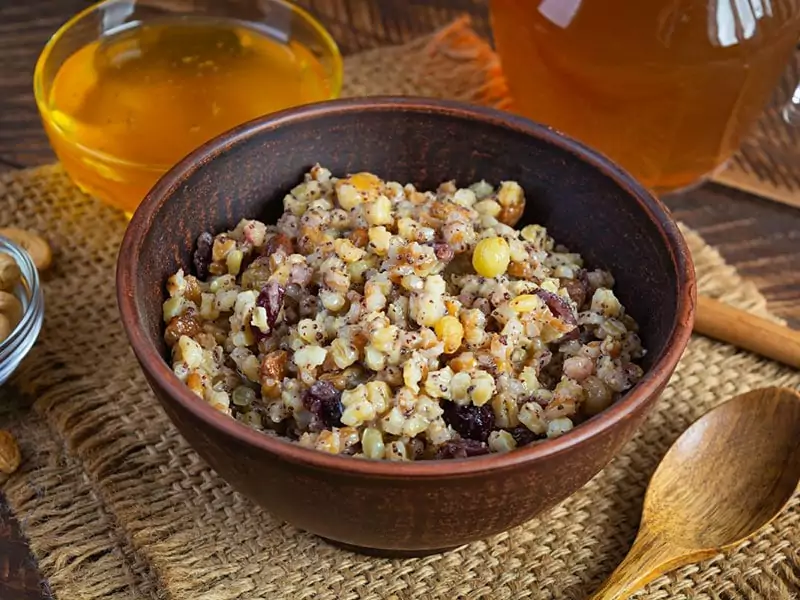
If you’re ever in Eastern Europe around Christmas Eve, especially in countries like Russia, Belarus, or Poland, you might come across a dish known as Kutia. It’s a Ukrainian sweet dish primarily made from wheat berries, honey, sugar, dried fruits, nuts, and seeds.
These whole grains, comprising the entire wheat kernel sans the husk, are far more nutritious than ordinary wheat, lending a hearty base to the dish.
This is traditionally offered to Father Frost, akin to Santa Claus in Slavic folklore, and to the ancestors, showcasing its cultural significance. With its delicate sweetness, it’s a treat that envelops the festive spirit and warms the winter night.
Varenyky (Ukrainian Dumplings)
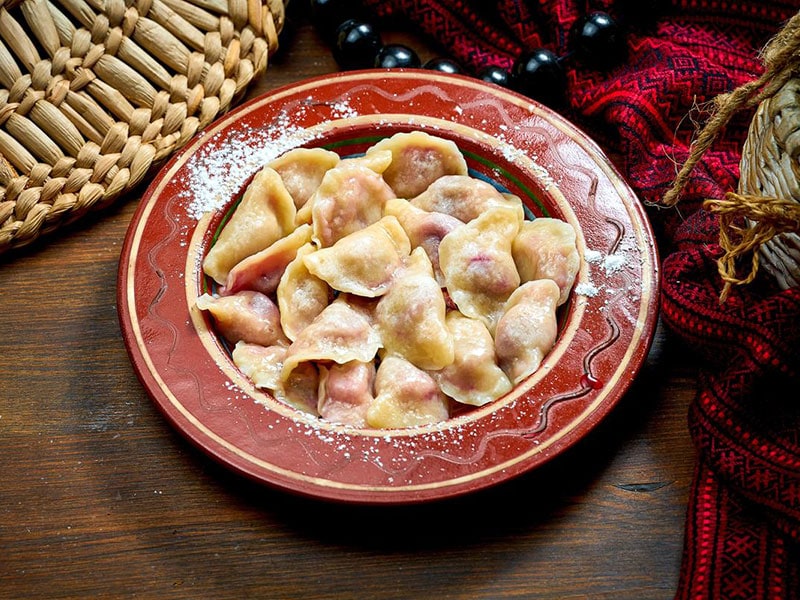
On your culinary journey through Ukraine, you’ll likely come across a delightful dumpling known as Varenyky. These dumplings trace their roots back to Asia, making their way to Europe during the Middle Ages via the bustling trade routes.
Here, the dumplings found a new home and underwent a gastronomic transformation to suit the local tastes. The beauty of Varenyky lies in its flexibility. The dumplings are fashioned from unleavened dough, meticulously wrapped around various fillings.
It could be savory, like cottage cheese, potato, boiled beans, mushy peas, cabbage, or even meat or fish. Or it could be sweet, teeming with plums, currants, cherries, and other fruits.
These delicate packets of flavor are then boiled to perfection, making them a unique departure from many other dumplings, which are often pan-fried.
Varenyky isn’t just an everyday meal in Ukraine. It’s a part of traditional celebrations, a nod to its beloved status in the national cuisine.
A helpful tip while preparing Varenyky is that Ukrainians often use fermented milk products to bind the dough together, though eggs are an acceptable alternative.
Once cooked, these dumplings are traditionally crowned with a dollop of sour cream for a main dish or a dessert, depending on the filling.
Deruny / Draniki (Potato Pancakes)
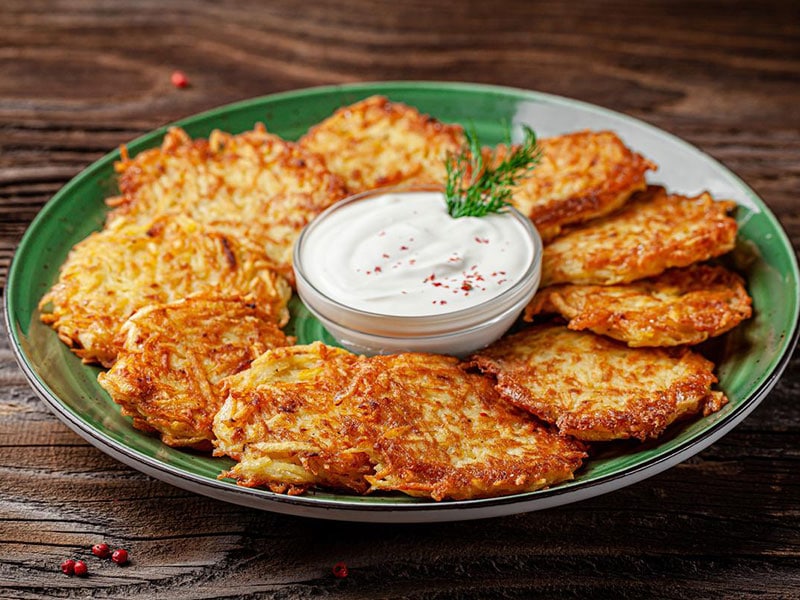
Deruny, also known as Draniki, are cherished potato pancakes from Belarus, Ukraine, and Slovakia. The name, which means “to grate,” reveals the preparation method: finely grated raw potatoes and onions mixed with flour and eggs.
These savory pancakes are pan-fried in a neutral oil, preserving the divine potato flavor. My tip? Use a food processor for quicker grating. You can enjoy Deruny as a main dish for dinner or breakfast, traditionally topped with sour cream.
The city of Korosten in Ukraine even celebrates these pancakes with an annual festival. So, if you’re after a simple, budget-friendly, and comforting dish, Deruny could be just what you need.
Salo (Cured Slabs)
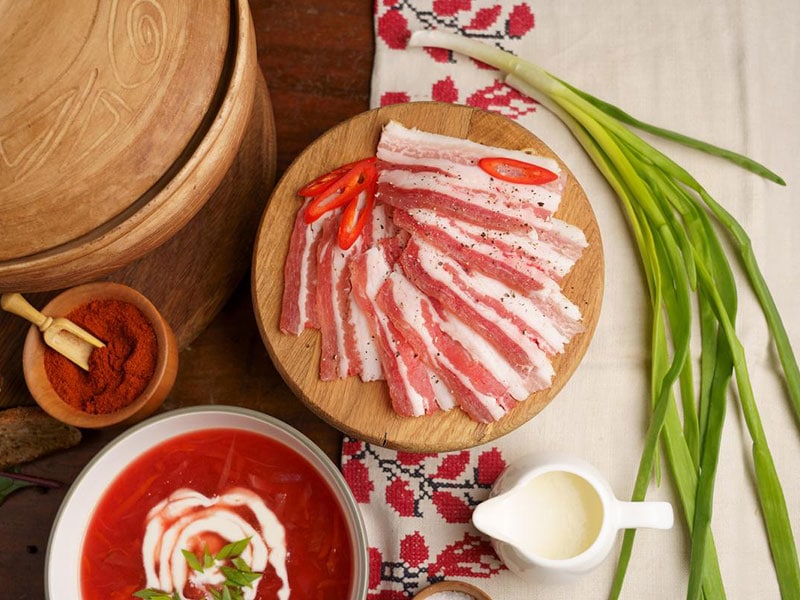
Salo, also known as Slanina, is a favorite across Eastern and Southeastern Europe. It’s essentially cured slabs of fatback, sometimes with skin. The curing method involves dry salting or brining, and the fatback is often seasoned with paprika in East Slavic, Hungarian, and Romanian cuisine.
In South and West Slavic cultures, it’s often smoked. This versatile delicacy can be enjoyed both raw and cooked, fried, or even finely chopped with garlic for borscht. One popular way to savor Salo is thinly sliced with rye bread, making it a perfect companion to vodka.
Some even use it to render fat for cooking. Interestingly, “Salo in chocolate” is a Ukrainian dish from the late ’90s, originally created as a joke!
Romania
Pastrami (Deli Meat)
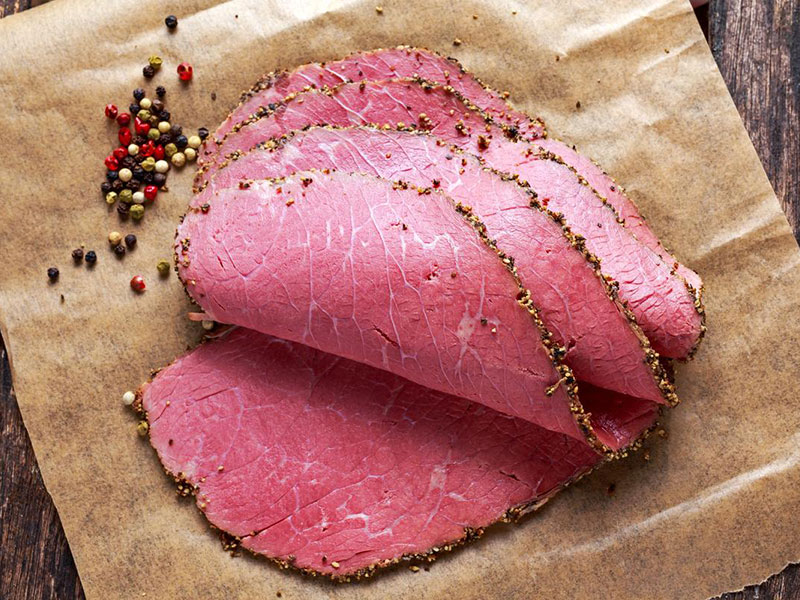
Pastrami, an iconic component of both Eastern European and American Jewish cuisine, is also a staple in many New York City delis. Often served hot on sandwiches like the famous ‘pastrami on rye,’ this delicious meat has roots in preservation techniques predating modern refrigeration.
The term ‘pastrami’ is borrowed from the Turkish ‘pastırma’, which means ‘to press’. The preparation process is a labor of love: the meat, usually beef brisket, is brined, then partially dried, seasoned with a variety of herbs and spices, and finally smoked and steamed.
While beef is the most common, variations using lamb, pork, chicken, or turkey also exist. The introduction of pastrami to the United States can be traced back to a wave of Jewish immigrants from Bessarabia and Romania in the late 19th century.
Cozonac (Sweet Bread)
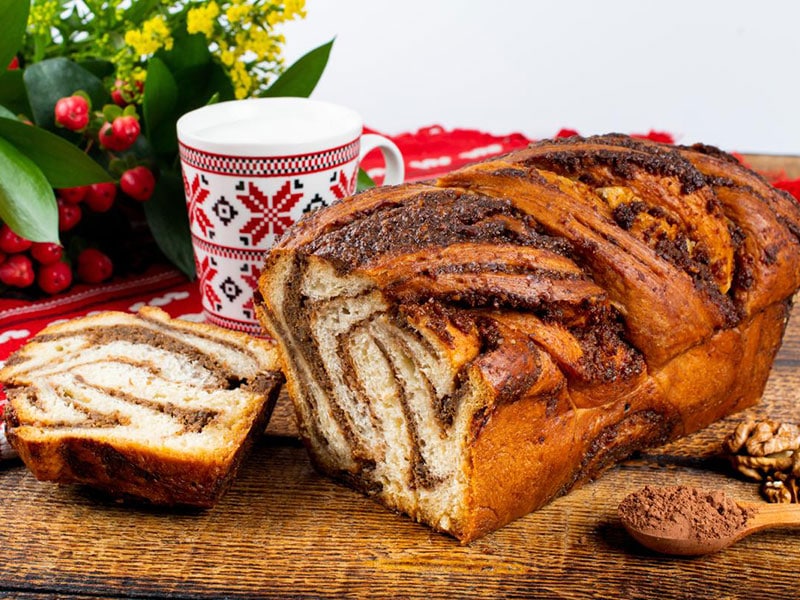
Cozonac, a traditional Romanian sweet dish, is a must during festive occasions like Easter and Christmas. What goes into it? Flour, yeast, eggs, milk, sugar, butter – these ingredients blend together and rise before baking, yielding a heavenly aroma and taste.
While the dough remains consistent throughout Romania, it’s the filling and trimmings that differ between regions, ranging from raisins, lemon zest, and grated orange to walnuts, hazelnuts, rum, and vanilla flavor.
Some Cozonac even have a flavorful filling of ground walnut mixture, poppy seeds, cocoa powder, rum essence, or raisins, forming a delightful swirl within the bread.
Cozonac was chosen to represent Romania in the Café Europe initiative of the Austrian presidency of the European Union back on Europe Day 2006 [5].
Mămăligă (Cornmeal Porridge)
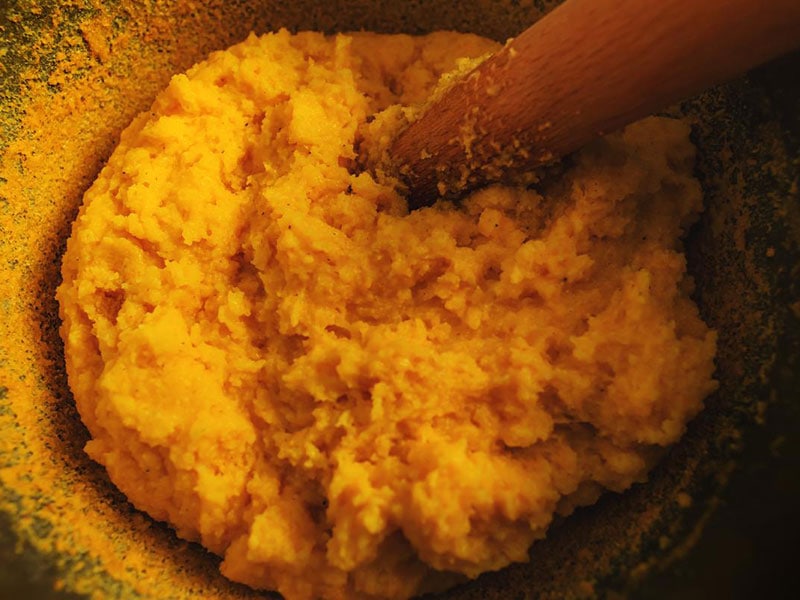
Mămăligă, a cornmeal porridge, hails from the culinary traditions of Romania and finds great favor in Moldova and Western Ukraine as well. This simple yet hearty dish is created from yellow maize flour, water, and salt.
It has an Italian cousin, polenta, that it closely mirrors. Cooking Mămăligă is an art requiring constant stirring in a specialized, round-bottomed kettle known as a “ceaun” or “tuci”. As it cools, the porridge morphs into a solid shape, ready to be sliced and savored.
The serving suggestions for Mămăligă include a combination of sour cream, cheese, and herbs, adding layers of flavor to the dish. The benefits of Mămăligă extend beyond its taste. As a fat-free, cholesterol-free, and high-fiber food, it’s a healthier alternative to white bread and pasta.
Other
Stuffed Cabbage Rolls – Central, Northern, Eastern and Southeastern Europe
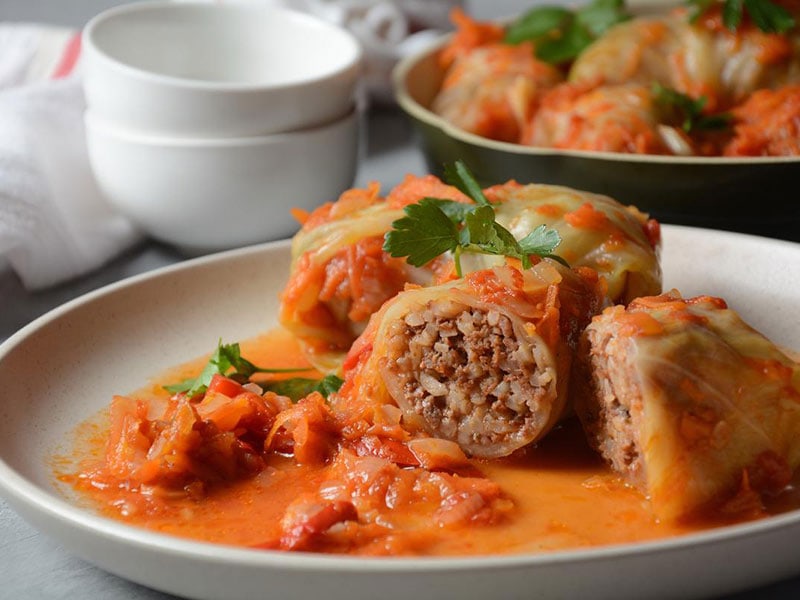
Stuffed cabbage rolls, a dish embraced by Central, Northern, Eastern, and Southeastern Europe, bring the humble cabbage leaf to life by filling it with a variety of mouth-watering ingredients.
These stuffed delicacies are known as Golubtsy in Russia and Ukraine, Gołąbki in Poland, and Balandėliai in Lithuania, with each region putting its own twist on the filling.
Golubtsy, for instance, pairs ground meat (beef and/or pork) with uncooked rice, carrots, and parsley, and the rolls are then simmered in a tangy tomato sauce.
Meanwhile, Gołąbki from Poland embraces a savory mixture of ground meat, onion, rice, and mushrooms, served decadently with sour cream and mushroom sauce.
Kefir (Fermented Milk Drink) – Popular Across Eastern Europe

Kefir, a popular fermented milk drink, is a staple in Eastern European countries like Russia, Estonia, Hungary, Lithuania, Poland, Ukraine, and the Czech Republic. It’s a versatile drink, fitting for any meal from breakfast to dinner.
The key components are milk – often from cows, goats, or sheep – and kefir grains. The final product has a tangy flavor, akin to plain yogurt but with a sharper edge. For a burst of sweetness, some folks add fruit flavorings.
The consistency of Kefir is creamy, boasting a light texture that can be quite refreshing. A distinguishing factor from yogurt is the fermentation process – kefir is fermented at room temperature, whereas yogurt needs a warmer environment.
Moreover, kefir is loaded with beneficial elements, including Lactobacillus bacteria, vitamins B, calcium, and amino acids, contributing to its reputation as a healthful choice [6].
Chebureki (Deep-Fried Dumplings) – Popular Across Eastern Europe
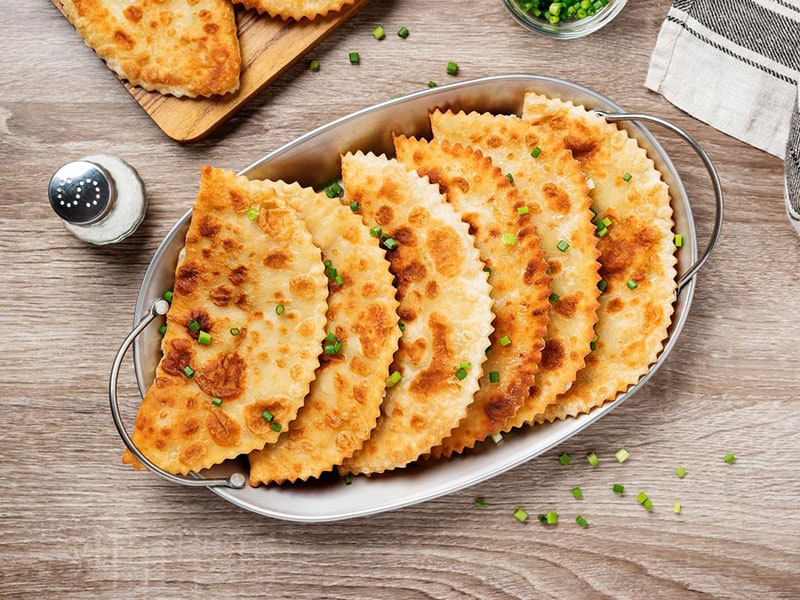
Chebureki, with its origins in Turkic cuisine, is a beloved street food across Eastern Europe – think Russia, Ukraine, Lithuania, Latvia, and beyond. The name itself stems from “Çiğ Börek,” translating to “raw pie.”
This hints at the cooking process where the raw meat filling and dough are fried together. The dough cradles a flavorful mix of minced meat (often beef, lamb, or pork), onions, herbs, and seasonings.
The result is a deep-fried dumpling in the shape of a half-moon. Sizes of Chebureki can vary, but regardless of the size, it’s a budget-friendly snack you’ll likely spot at street vendors or small stores. The customary way to eat Chebureki is with your hands, adding a casual, on-the-go element to this tasty dish.
Pirog (Sweet or Savory Pie) – Russia and Ukraine
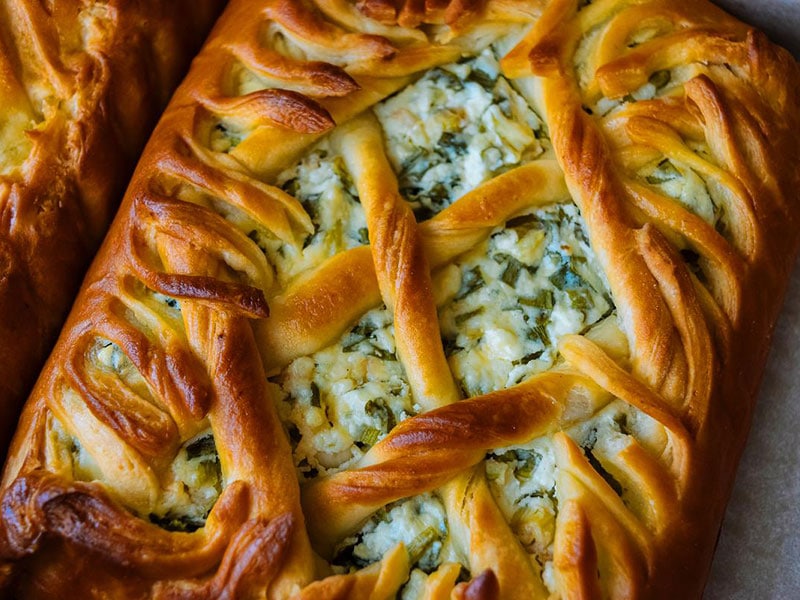
Pirog is a versatile dish from Russia and Ukraine, made with yeast-raised dough and packed with either sweet or savory fillings. If you have a sweet tooth, expect to find cottage cheese, plums, or berries tucked inside.
If you prefer savory, you might enjoy fillings like meat, rice, cabbage, and onions. Pirog pairs wonderfully with borscht soup.
Moreover, Pirog also charms with its diverse shapes, whether oblong, circular, or rectangular. You might encounter closed versions, sealed with dough, or open-faced styles that put their delicious fillings on full display.
Vodka – Poland, Russia, and Sweden

Vodka, a distilled alcoholic beverage, has significant importance in culinary traditions though it’s not correctly a dish. Originating from Poland, Russia, and Sweden, it is produced by distilling fermented cereal grains and potatoes.
With an alcohol by volume (ABV) of around 40%, vodka possesses considerable potency, although there are variations like Poland’s Spirytus, the world’s strongest alcoholic beverage at 96% ABV.
This spirit can be appreciated neat and chilled or incorporated into cocktails such as vodka martini, vodka tonic, or Moscow mule, thus marking its versatile nature in the realm of alcoholic beverages.
Paskha (Easter Dessert) – Ukraine and Russia
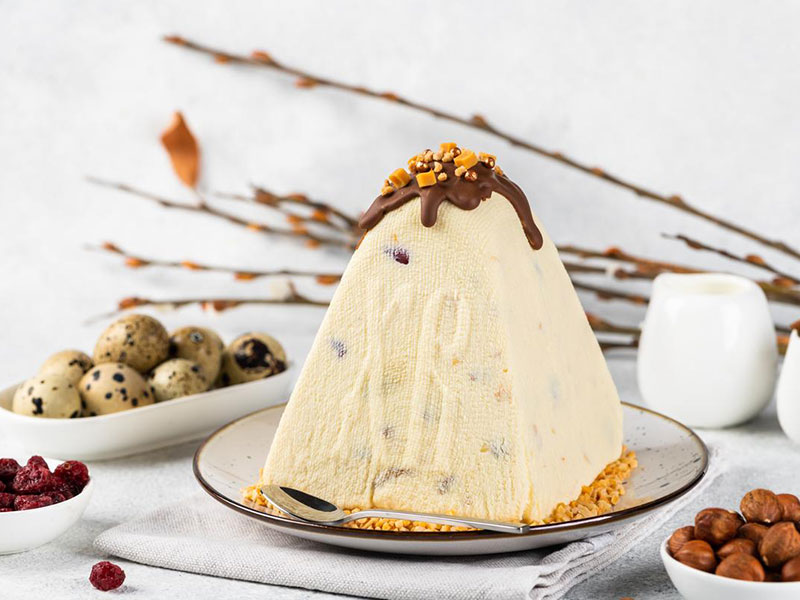
Paskha, a beloved Easter dessert from Ukraine and Russia, has a special place in my culinary experiences. The key ingredient is traditionally white tvorog cheese, symbolizing the purity of Christ. The blend includes sour cream, butter, raisins, and candied fruits.
The form is distinct – a truncated pyramid, perhaps reflecting Christianity’s early Jewish roots, the Trinity, or Christ’s tomb. Further garnishing with Orthodox religious symbols amplifies its significance. Both cooked and uncooked Paskha exist, each with its distinctive preparation method.
The cooked version is akin to an egg custard with other ingredients folded in. The uncooked type combines raw curd with the rest at room temperature, hence typically smaller due to a shorter shelf life.
Served with Easter breads like Paska or Kulich, Paskha stands out. Tasting this alongside these breads, I felt a connection to the vibrant local traditions and the communal spirit of these holidays.
Sorrel Soup – Russia, Hungary, Lithuania, Romania, Armenia, Ukraine, etc.
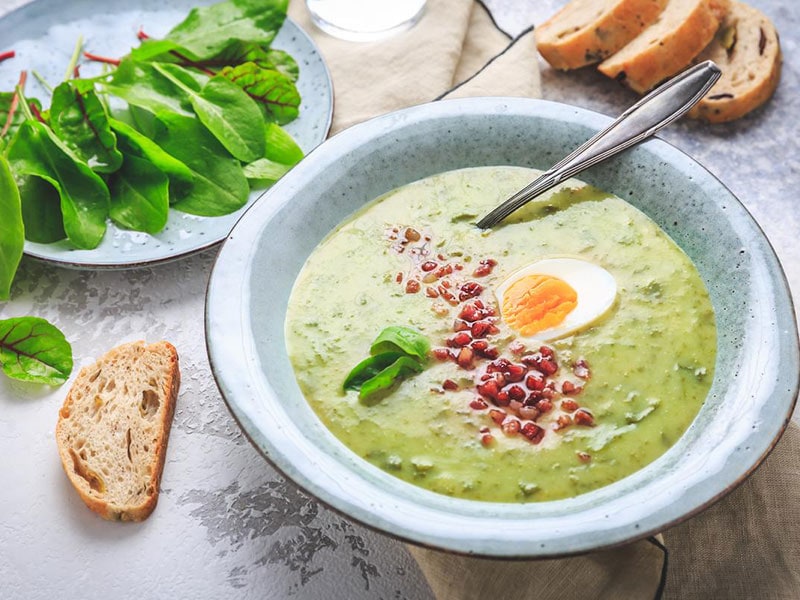
Sorrel Soup, also known as Green Borscht or green shchi in Russia, is a notable presence in several countries, like Hungary, Lithuania, Romania, Armenia, Ukraine, and more.
Its main components are water or broth, sorrel leaves, and salt, creating a simple yet flavorful base. Other veggies might join in, such as spinach, garden orache, chard, and even dandelion, either replacing or mingling with the sorrel.
When I tried Sorrel Soup, what I remember most were the additional ingredients: egg yolks or whole eggs, potatoes, carrots, parsley root, and rice, turning it into a hearty meal.
In countries like Poland, Ukraine, Russia, and Belarus, any type of broth can be used instead of water, adding another layer of richness. The defining characteristic of Sorrel Soup is its sourness, a result of the oxalic acid in sorrel.
Yet, when it’s garnished with smetana, an Eastern European sour cream, the sour taste subtly gives way. I enjoyed it both hot and chilled, each providing a distinct sensory experience.
Papanasi (Cheese Doughnuts) – Romania And Moldova

Papanasi, pronounced pa-pa-nash, is a dessert enjoyed in Romania and Moldova. These doughnut balls are made of a yeast-free dough that may contain semolina or wheat flour, and it’s given a punch of flavor with rum, lemon zest, or orange zest.
I remember the first time I prepared papanasi; the method of cooking caught my attention. They can be either fried or boiled, with the boiled variation sometimes arriving with a sugar coating for an extra sweet touch.
The serving part is where papanasi becomes even more enticing. They come adorned with fruit jams, crème fraîche, or sour cream, and the combination of the warm, zesty doughnut with the cool, tangy toppings is something that never fails to impress.
Lavash (Flatbread) – Armenia
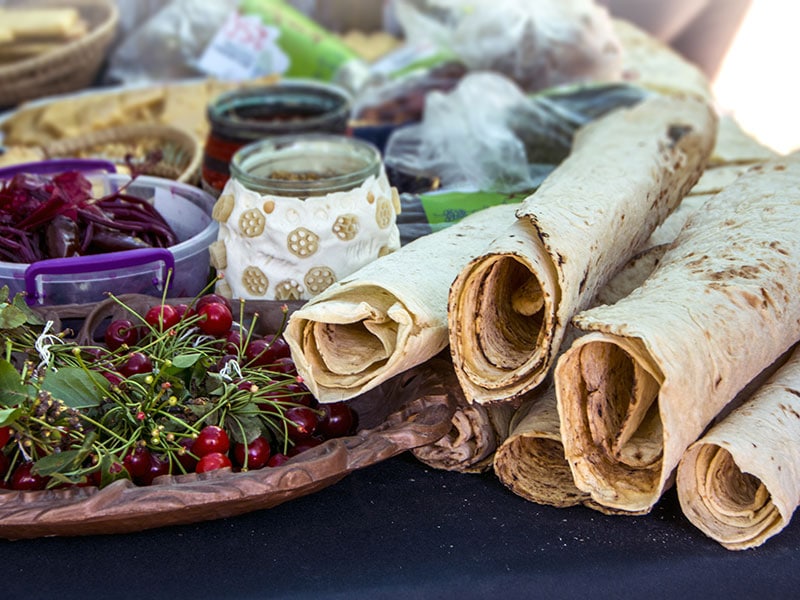
Lavash, an Armenian-originated flatbread, has widespread popularity in South Caucasus and West Asia. Many nations there assert its origination, acknowledging its integral role in Armenian culinary traditions.
This bread is a simple mixture of wheat flour, salt, and sourdough starter. Bakers traditionally sprinkle it with toasted sesame or poppy seeds before it enters the tonir, a clay oven. However, modern adaptations use a griddle or wok.
Fresh from the oven, Lavash is soft and supple, but it hardens into a brittle bite over time. This isn’t a problem, though – a sprinkle of water softens dried Lavash perfectly. The versatility is outstanding.
Fresh Lavash wraps up ingredients for a quick sandwich, while the dried version adds a hearty element to soups and broths. One thing I appreciate about Lavash is its health-friendly profile; it generally contains less oil and sodium than many other flatbreads.
Banitsa (Cheese Pastry) – Bulgaria
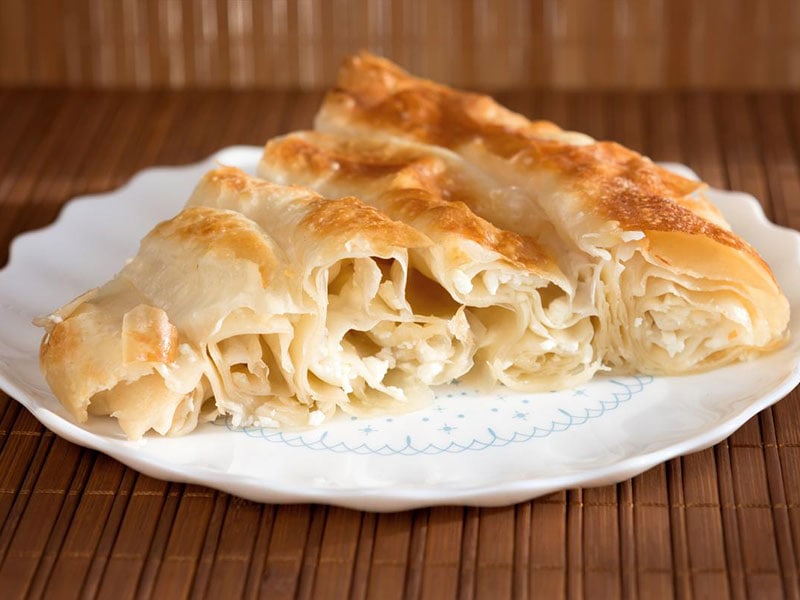
Banitsa is an iconic layered pastry from Bulgaria. Nestled between each layer of delicate phyllo pastry lies a rich mixture of brined cheese, whisked eggs, and yogurt. But this staple dish doesn’t stop at savory; its flavors are as diverse as Bulgaria itself.
That’s because some variations may include ingredients like lentils, mushrooms, or vegetables such as spinach or pumpkins. Even ham or minced meat might make a savory appearance. Its taste profile ranges broadly from sweet to tangy.
Beyond its culinary appeal, Banitsa holds cultural significance. On special occasions like Christmas and New Year’s Eve, this pastry takes center stage. It may even contain small charms (coins or small symbolic items) or written wishes, much like a fortune cookie.
Plov – Azerbaijan
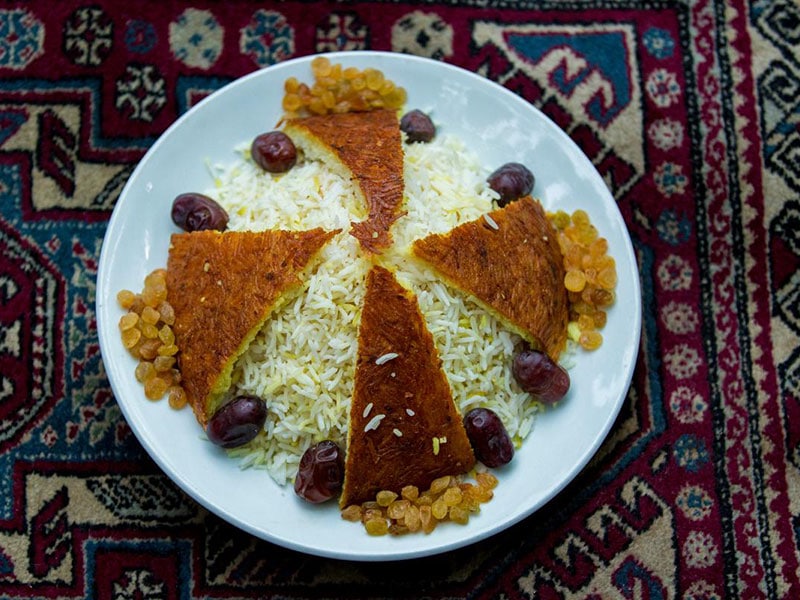
Plov, a rice-based dish cherished in Azerbaijan, is also known as “pilaf.” Interestingly, this national dish is more like a culinary tapestry with over 40 regional variants, each sporting its moniker based on the accompanying ingredients.
Long grain rice forms the bedrock of Plov, coupled with a plethora of additions such as lamb, beef, chicken, vegetables, garlic, spices, and even dried fruits. A particularly beloved variant is Shah plov from the Ganja region, which artfully blends meat and rice under a crispy layer of fried dough.
Traditionally, Plov simmers in a “kazan,” a large metal pot, and it’s not uncommon to spot it as a tempting street food in Azerbaijan. Uniquely, in this country, Plov preparation is primarily an outdoor activity and typically a male job.
Gürzə – Azerbaijan
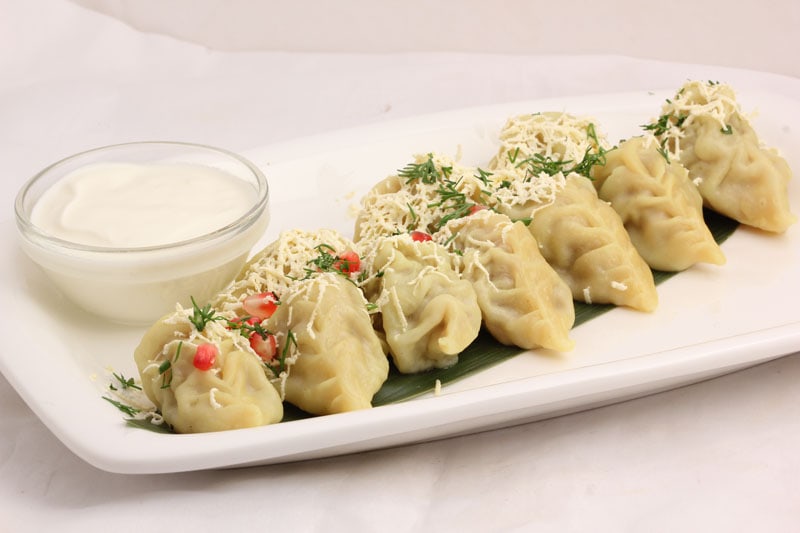
Gürzə holds an esteemed place in Azerbaijani cuisine as an age-old dumpling tradition. These small cylindrical treasures blend a thin layer of dough with a core of pre-fried minced lamb and onion.
The dough is then artfully formed into dumplings that are boiled, though some versions invite a sizzling dance in hot oil. Each bite of Gürzə promises a satisfying mix of delicate dough and flavorful filling.
When it’s time to serve these dumplings, they can come bathing in their cooking broth or stand-alone, eagerly waiting to be paired with a condiment ensemble of garlic, yogurt, and mint.
Beshbarmak – Kazakhstan
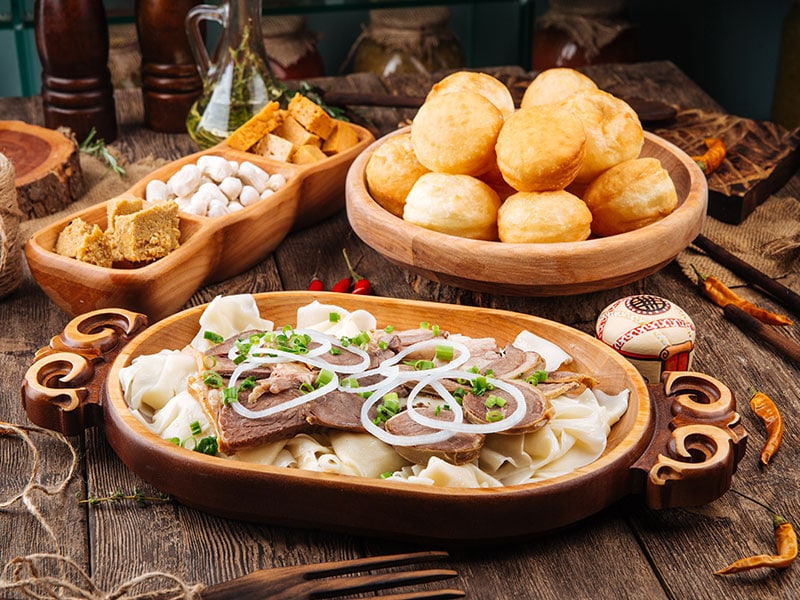
From the heartland of Kazakhstan comes Beshbarmak, a national and most common dish of Kazakhstan that infuses tradition into every morsel. The name ‘Beshbarmak’ translates to “five fingers,” signaling that this dish is best savored using all your fingers.
It’s an intriguing medley of ingredients, with flour, water, egg, and salt coming together to create hearty noodles. The plot thickens with an addition of chopped meat, be it mutton, lamb, horse, or even beef, and a drizzle of onion sauce adds another layer of flavors.
For noodle lovers, there’s an option to switch to lasagna. Alongside this dish, a bowl of Shorpa, a delectable broth, often makes a friendly appearance.
Served on a large platter, Beshbarmak is traditionally displayed on a low table or a clean cloth on the floor, inviting everyone to dive in and celebrate the flavors of Kazakh cuisine.
Tochitură – Moldova and Romania
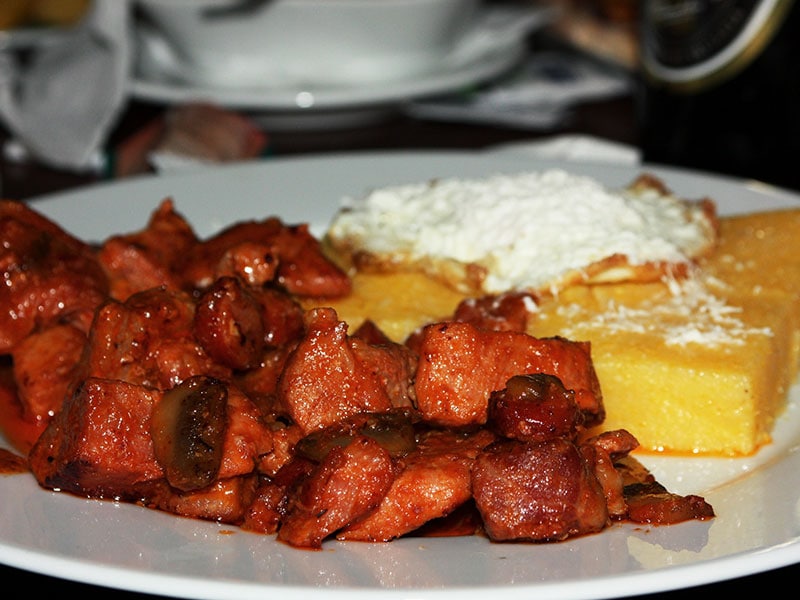
Tochitură, a traditional stew from Moldova and Romania, warms your soul with its simplicity and rich flavors. This hearty dish primarily uses pork, but you might stumble upon variations with beef or chicken.
The secret to its luscious taste is the fatty pork neck or similar cuts that stew slowly over a low fire, basking in their juices. While some prefer to savor it without any embellishments, the more common (albeit less traditional) version sees the introduction of tomato sauce at the end of the cooking process.
Serving Tochitură becomes a grand affair when paired with mămăligă, a local polenta, and Brânză de burduf, a type of sheep cheese.
FAQs
Embracing The Past, Shaping The Future
Having delved into the vibrant tapestry that is traditional Eastern European cuisine, I’m absolutely smitten by the richness, diversity, and heartwarming stories behind each dish. It’s evident that these meals continue to serve as enduring links to a culturally abundant past.
Now, it’s over to you! Unleash your culinary curiosity and engage with the flavors of this vast region. Remember to like, share, and comment on your favorite dishes or cooking experiences, and don’t hold back on trying your hand at a new recipe. See you in future posts!
References
- Syutkin, P. and O. (2023) The Russian salad that never goes out of fashion, The Moscow Times.
- Seton Hall University (2023) Maslenitsa, Russian mardi gras, Seton Hall University.
- Ajika sauce granted status of Intangible Cultural Heritage (no date) Agenda.ge.
- Culture of Ukrainian borscht cooking inscribed on The list of intangible cultural heritage in need of urgent safeguarding (no date) UNESCO.org.
- Cozonac (2022) Wikipedia.
- Farag, M.A. et al. (2020) The many faces of kefir fermented dairy products: Quality characteristics, flavour chemistry, nutritional value, health benefits, and safety, Nutrients.



